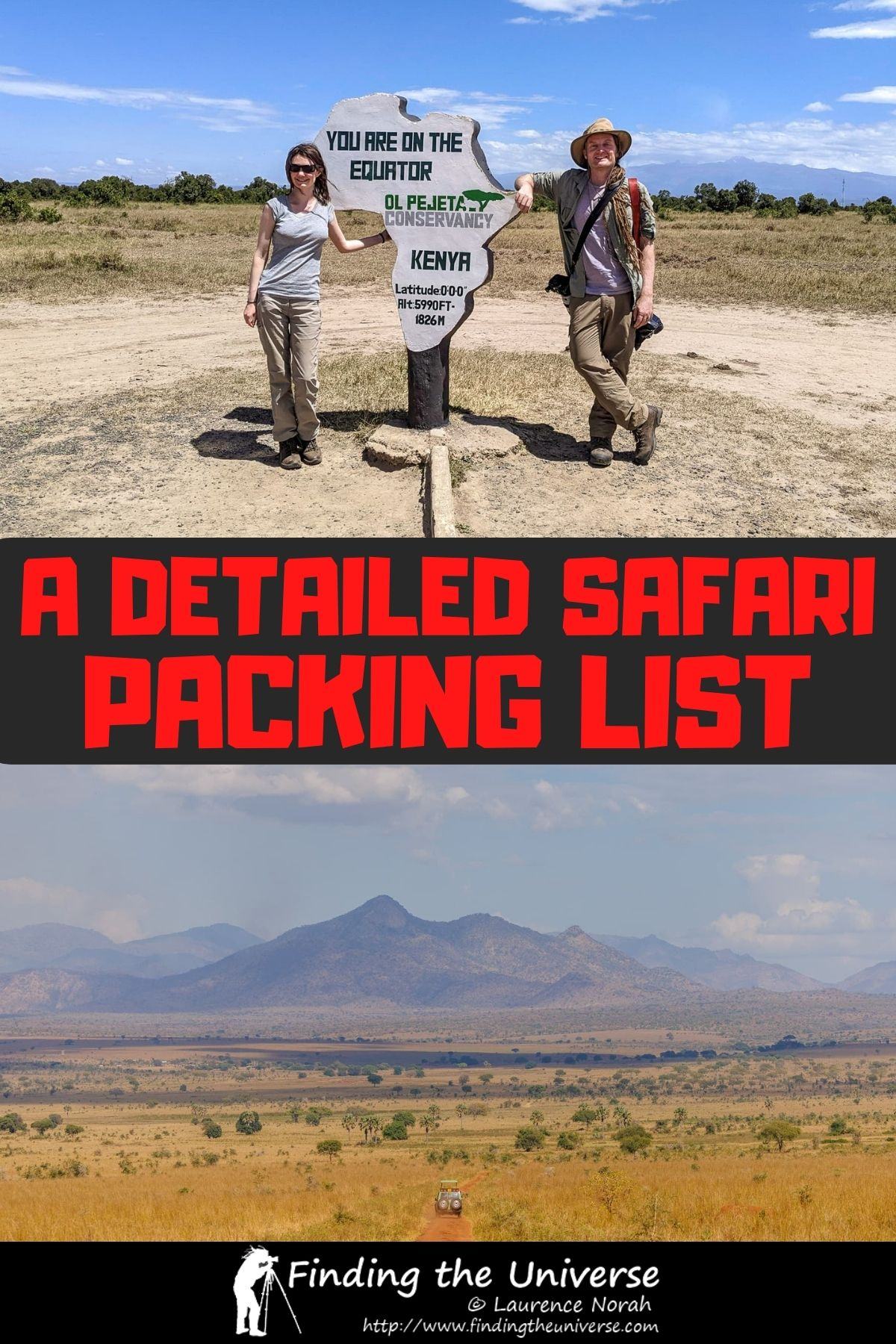So you’re going on safari. Awesome! We love safaris, and Jess and I have been lucky enough to take many safaris together. But now you might be wondering what to actually pack for safari.
Well, we’re here to help. We’ve taken safaris on a number of occasions in a variety of countries, including Kenya, Tanzania, Uganda, Namibia, South Africa, and Zimbabwe. From those trips, we’ve learned what items are essential for your safari packing list, and what you probably won’t need.
We’ll also share some tips on what to consider when packing and a detailed safari packing checklist for your reference.
What to Consider when Packing for Safari
Before you start putting your safari packing list together, you are going to need to know the answers to a few questions. These questions will help inform you as to what you need to pack.
There are many different types of safari across a range of destinations and accommodation types, so there is no “one size fits all” safari packing list.
Here are some questions that we think will help you figure out more clearly what you need to bring.
Where are you going?
The first question of course is where you are going on safari. Whilst many people will instantly think of the African continent when thinking of a safari trip, you can take a safari in destinations around the world.
Once you know where you are going, then you can start to research the answers to some of the other questions that are important to your safari trip planning.
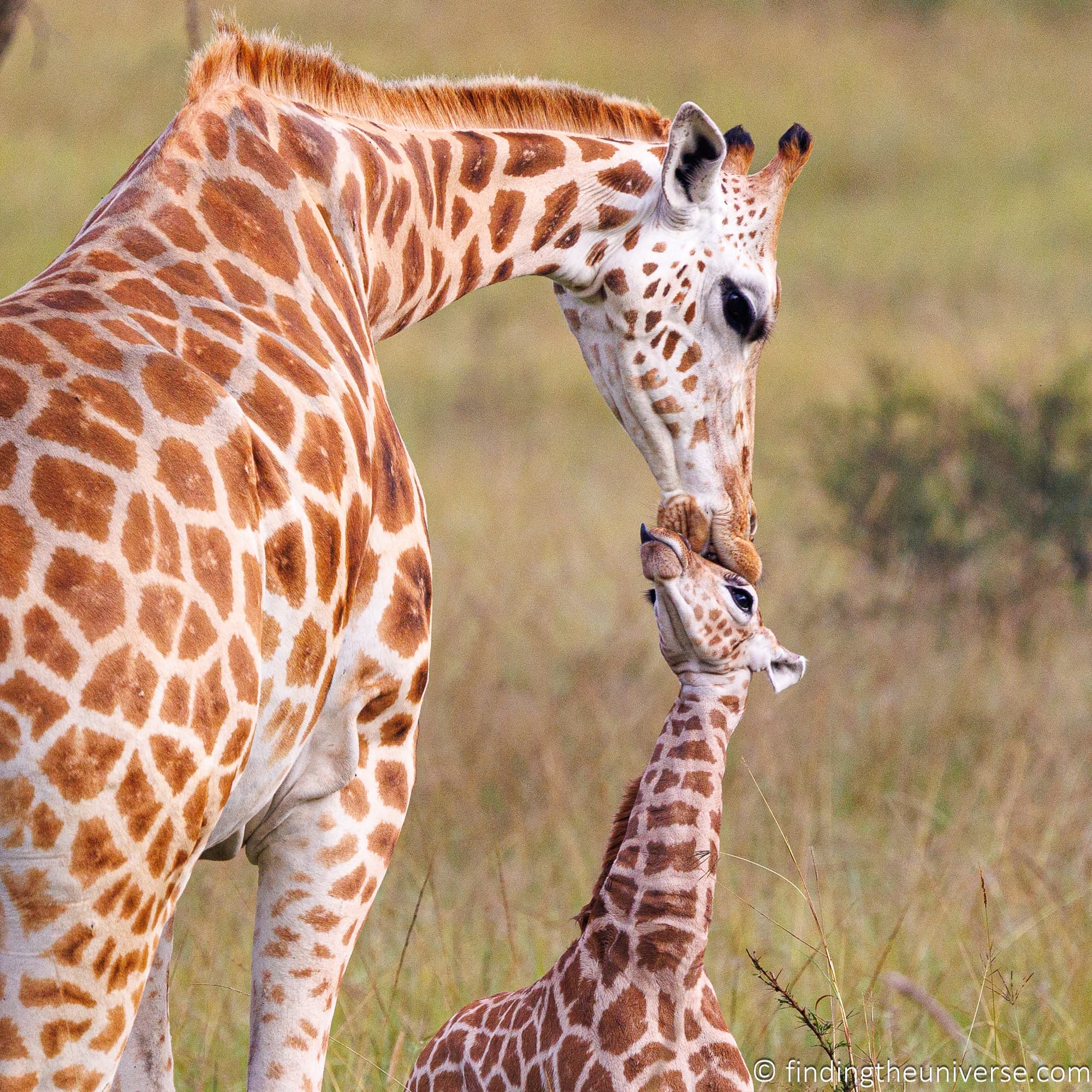
What will the weather be like during your safari?
When it comes to packing clothes and travel gear, having an idea of the weather is definitely going to make a big difference. Whilst we often think of safaris as taking place in hot and dry places, this is certainly not always the case.
If you are visiting Africa, this is obviously a huge continent, with very variable weather. If you are visiting the more southern countries like South Africa, these have a weather pattern similar to Europe or the USA, with cool winters and hot summers. Although of course being in the southern hemisphere, the seasons are reversed.
If you are visiting countries closer to the equator, like Kenya or Tanzania, then their proximity to the equator means that they tend to be quite warm year-round, and their seasons are instead divided into dry seasons and wet seasons.
The wet season, as the name suggests, is when you are more likely to get a lot more rain, whilst the dry season will be, well, drier. Of course, rain is theoretically possible at any time, but it is much less common in the dry season.
In some areas, it can get pretty cold, especially at higher elevations or when next to water. For example, if you are visiting Tanzania to hike Kilimanjaro, then even if it is hot in the plains, it is likely to be very cold near the summit.
So be sure to check into that, especially if you are visiting during the winter season of that country. You may be surprised to know you might need to bring a coat, gloves, hats, etc.
So take a look at the average temperatures, humidity, and rainfall in the places you plan to go at the time of the year you plan to visit. Also note that some countries may have very different climates across regions so be sure to take that into account as well.
One good website for checking average temperatures, precipitation, and humidity for the destinations on your trip is the “Climate (averages)” section of timeanddate.com. It allows for you to check the historical averages by month as well as the current weather.
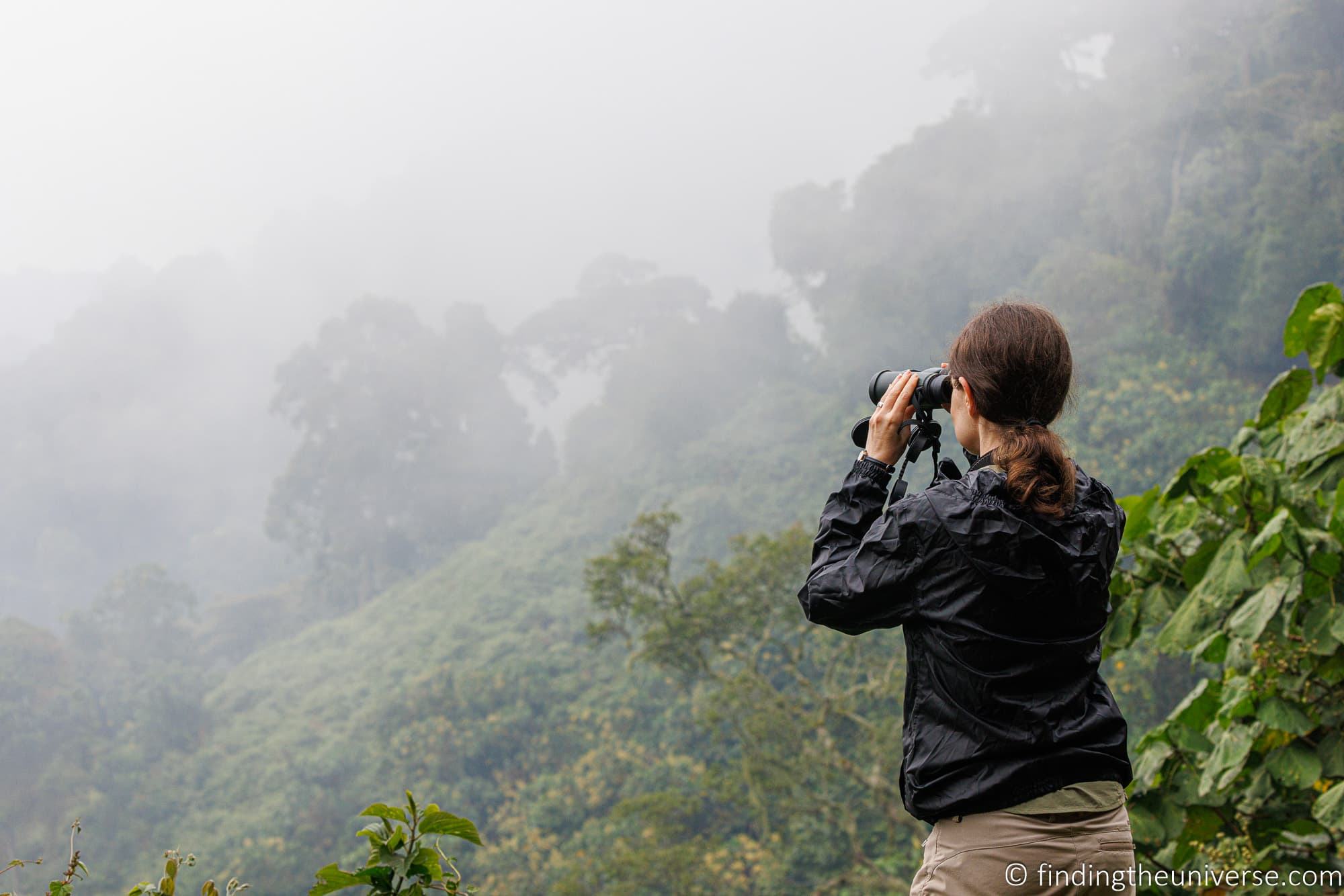
How long is your safari?
The duration of your safari will definitely make an impact on how much you pack.
If you are traveling for a few days, then you will likely need fewer items of clothing compared to a safari lasting for a few weeks or even months. For longer safaris, you’ll want to consider how to handle laundry, which we cover in a different section.
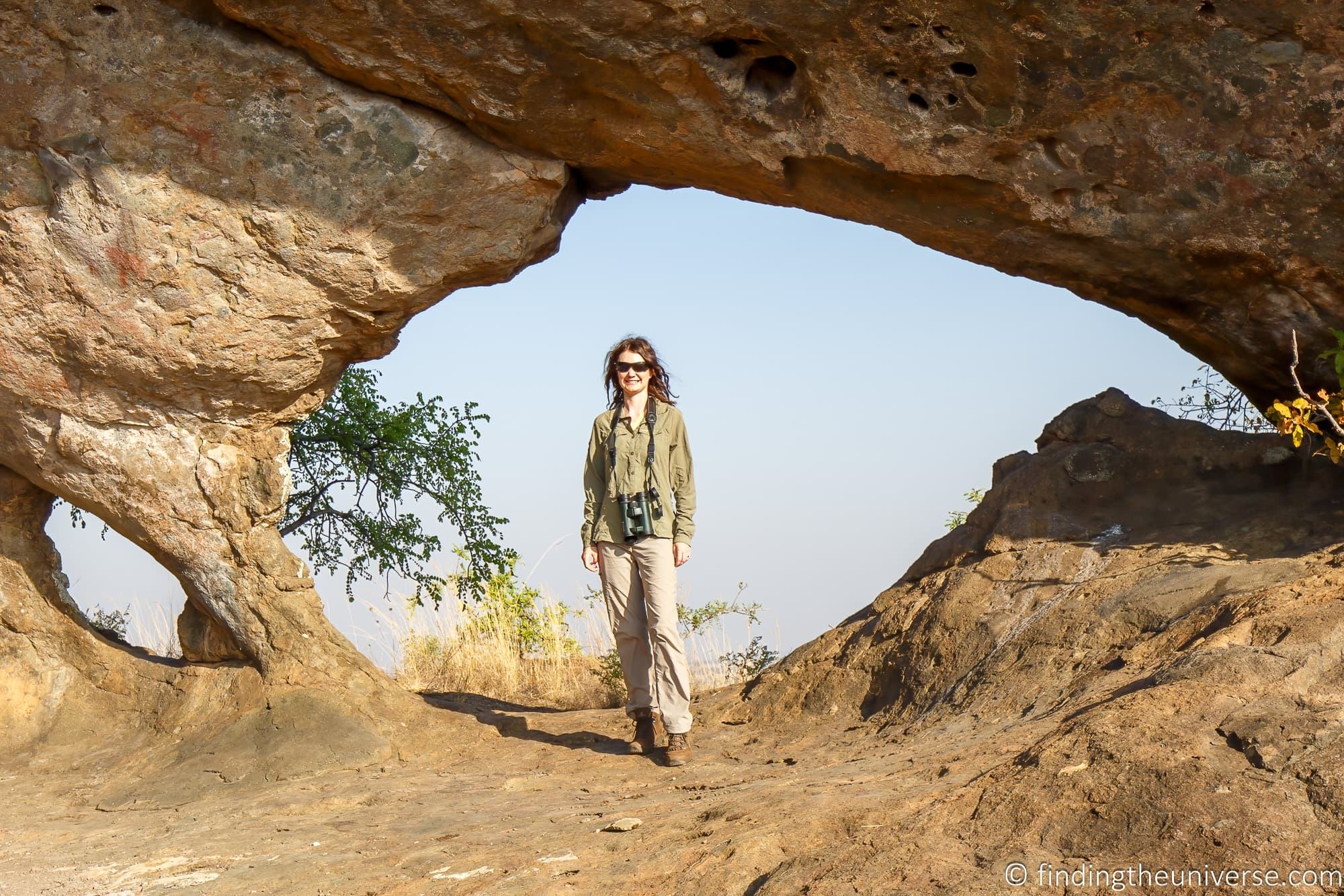
What types of transport will you be using?
It’s important to have an understanding of the transport you will be using when you are on safari, as this will often make a big difference in terms of what you can bring with you, and also the sort of luggage you can bring.
For example, if you are going on safari in an African country, many airlines flying to and from these destinations will have very generous luggage allowances, so it can be tempting to pack a lot in a big suitcase just in case.
However, once you are actually in the country, your local transport might not have quite so much room. If you are taking a group safari especially, with multiple people, there will be limited space available for each person.
Another big restricting factor is if you are taking any domestic flights on smaller aircraft. These are often used in-country to get to and from safari parks, and can skip long drives.
Smaller aircraft tend to be particularly restrictive when it comes to luggage allowances, both in terms of weight and also volume. The small holds mean they can only carry so much, and larger hard sided luggage for example might not even fit through the hatch. So many don’t allow you to bring any kind of hard-sided luggage.
If you are doing a multi-day hike, such as up Mt. Kilimanjaro or Mt. Kenya, your trekking guide and company will generally set size and weight restrictions on what can be carried.
Generally, you are allowed one duffel bag (carried by a porter) and then one personal backpack that you have on you at all times. Most companies (or hotels if staying at the same one before and after) will have somewhere you can store additional luggage before your hike if needed but you will need to check and make arrangements.
You will definitely want to talk to your safari organizer prior to packing. They should be able to give you clear instructions regarding luggage limits and restrictions. If you are flying on smaller aircraft, you will generally find that soft luggage is going to be preferable.
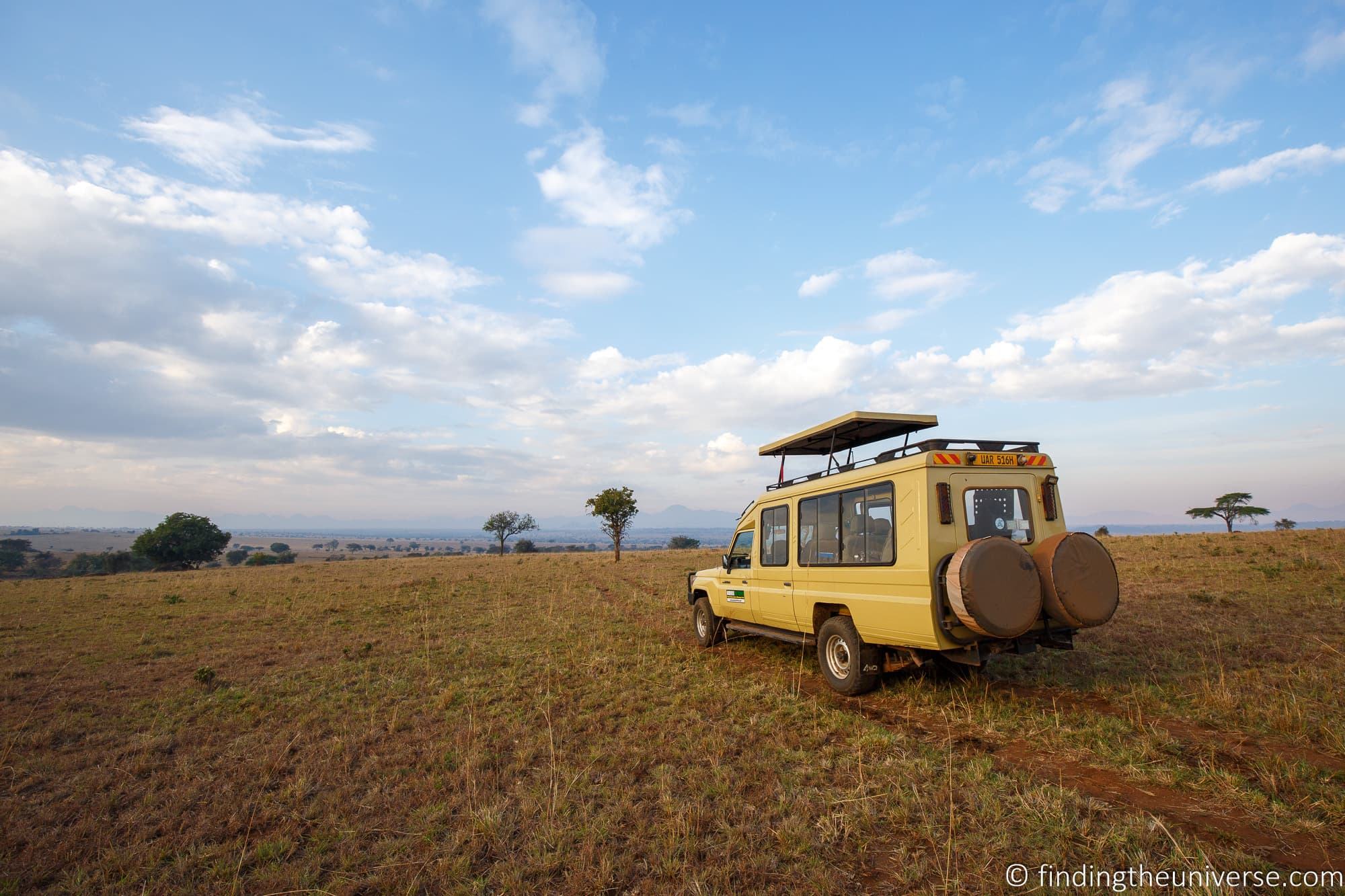
What activities will you be doing on your safari trip?
Every safari is different, and it’s important that you pack according to what you will be doing.
For example, a safari where you are going to spend the majority of your time in a vehicle looking at wildlife in game reserves will probably pack a bit differently than someone going on a safari which includes gorilla trekking, long hikes, climbing a mountain, fishing, cycling, camping, or spending a lot of time birdwatching on foot in swampy areas.
So it is good to have an idea of those activities. How much time will be spent in vehicles, walking, hiking, boating, biking, etc.? Will you be spending any time in cities doing activities like visiting museums, shopping, visiting restaurants, etc. Will you be going to a beach or spending a bit of time in swimming pools?
You should have a full itinerary for your safari so you should know what to bring, and a good tour operator should also give some suggestions as to essential items to bring.
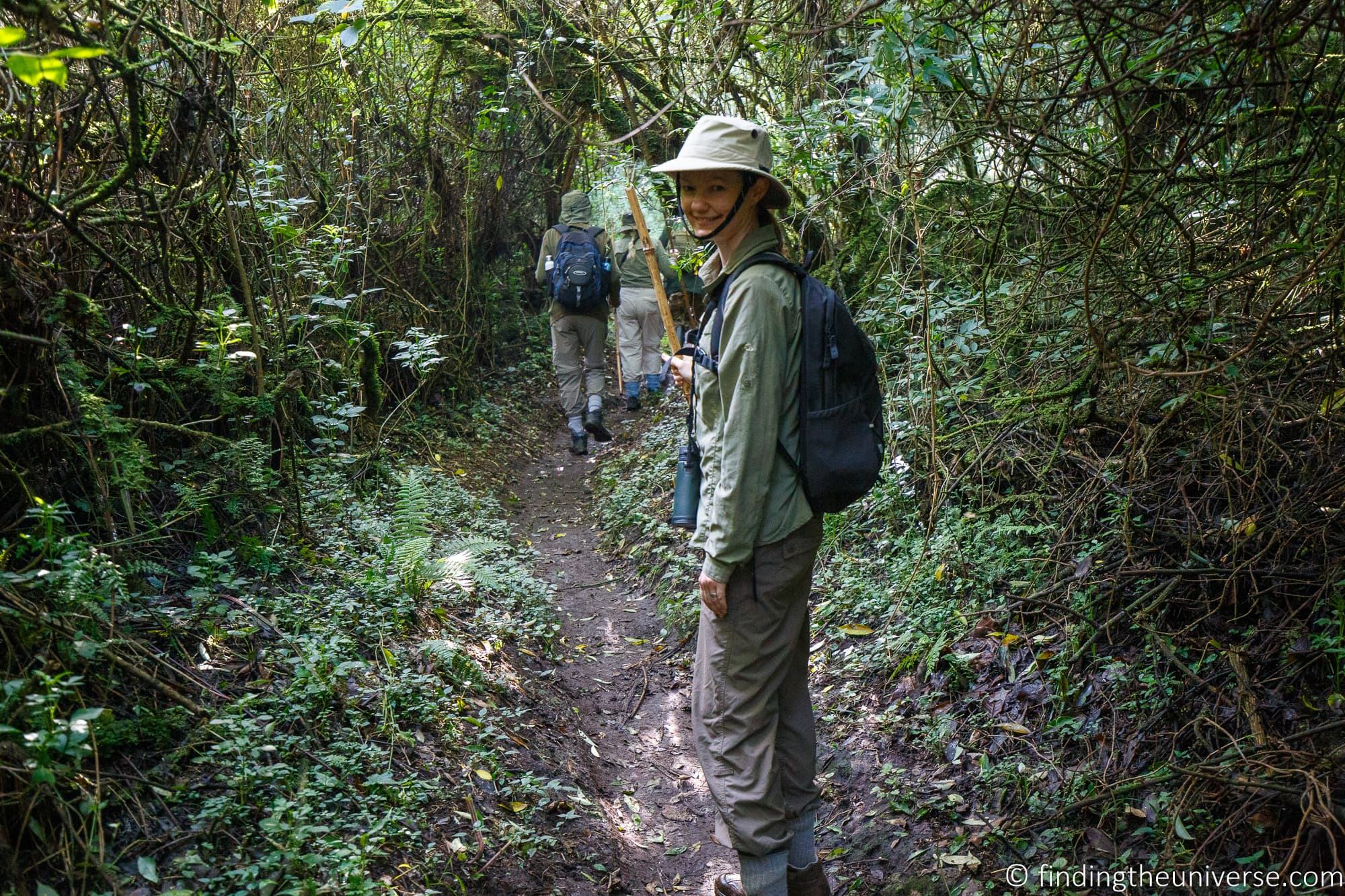
What sort of accommodation will you be staying in during your safari?
Safari accommodation varies wildly, from very simple budget camping options through to high end 5-star luxury lodges.
Whilst the majority of accommodation options that we have stayed at on safari have a fairly relaxed dress code, even at the luxury end, it is worth checking to see what the dress code is, if any. Sometimes evening attire might require a button up shirt for men for example or close toed shoes.
On the other end of the scale, if you are staying in a tent then you might need to consider things like shower shoes or nightwear that is suitable for midnight bathroom breaks at shared toilet blocks.
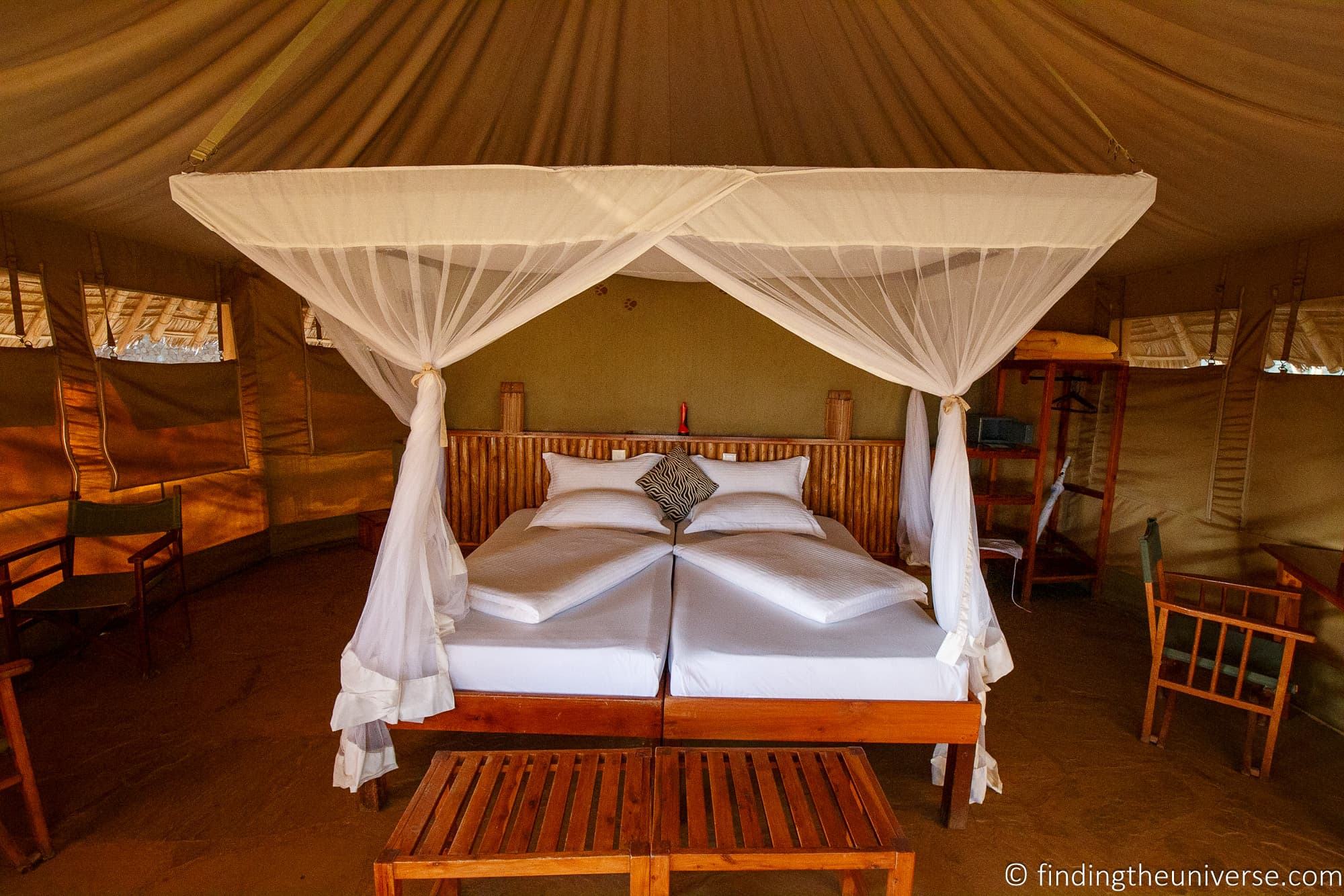
General Tips when Packing for Safari
Before we go through the packing list, we wanted to share some tips to help you pick what to bring with you on safari.
Clothing Color for Safari
Perhaps one of the more important things to consider when packing for safari is the color of the clothes you bring with you.
Generally, brown and green colors, or variants thereof, are regarded as the best. They generally blend into the surroundings, and have the bonus that they don’t show dirt quite as well, which is a benefit on dusty drives.
Bright primary colors are discouraged as they make you stand out more.
Blue, dark purple, and black colors should also be avoided. These colors are known to attract Tsetse flies, which have a very nasty bite and which can carry disease.
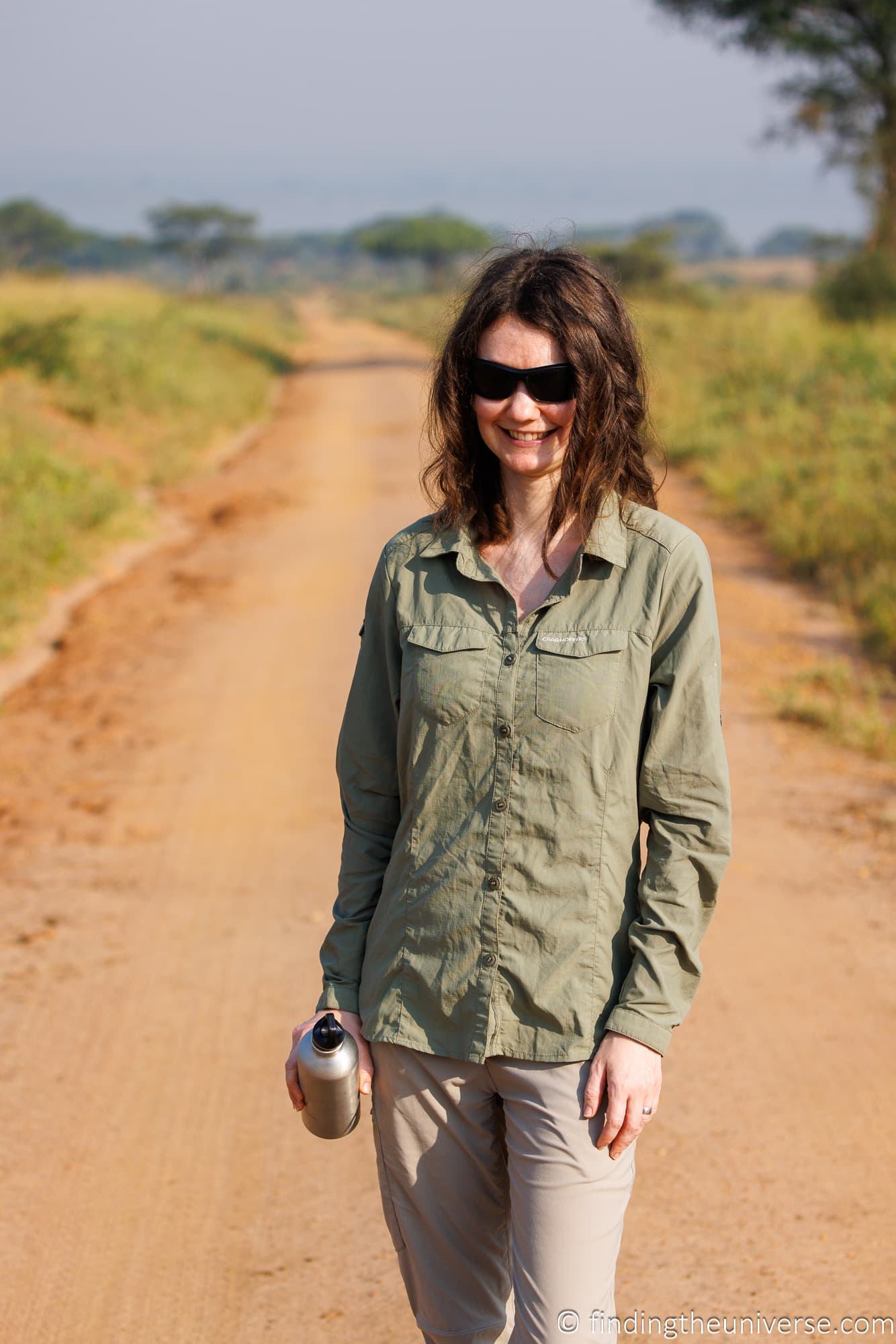
How Easy is it to Wash?
When putting your clothing list together, especially on a trip longer than a week or so, you will want to think about how easy each item of clothing is to wash. You might also want to consider how long it might take to dry.
A safari can be both a dusty and sweaty environment, meaning that unless you want to carry a lot of clothes, you will have to plan to do some laundry as you go on a longer trip. Most lodges will likely offer laundry, or you can do your own hand laundry easily enough.
With this in mind, high-end clothing which requires dry-cleaning or a careful delicate cycle might be best left at home if you don’t want it ruined. We’d suggest sticking to clothes that wash easily in hot or cold water, and which air-dry quickly (the majority of locations we’ve visited do not have electric driers).
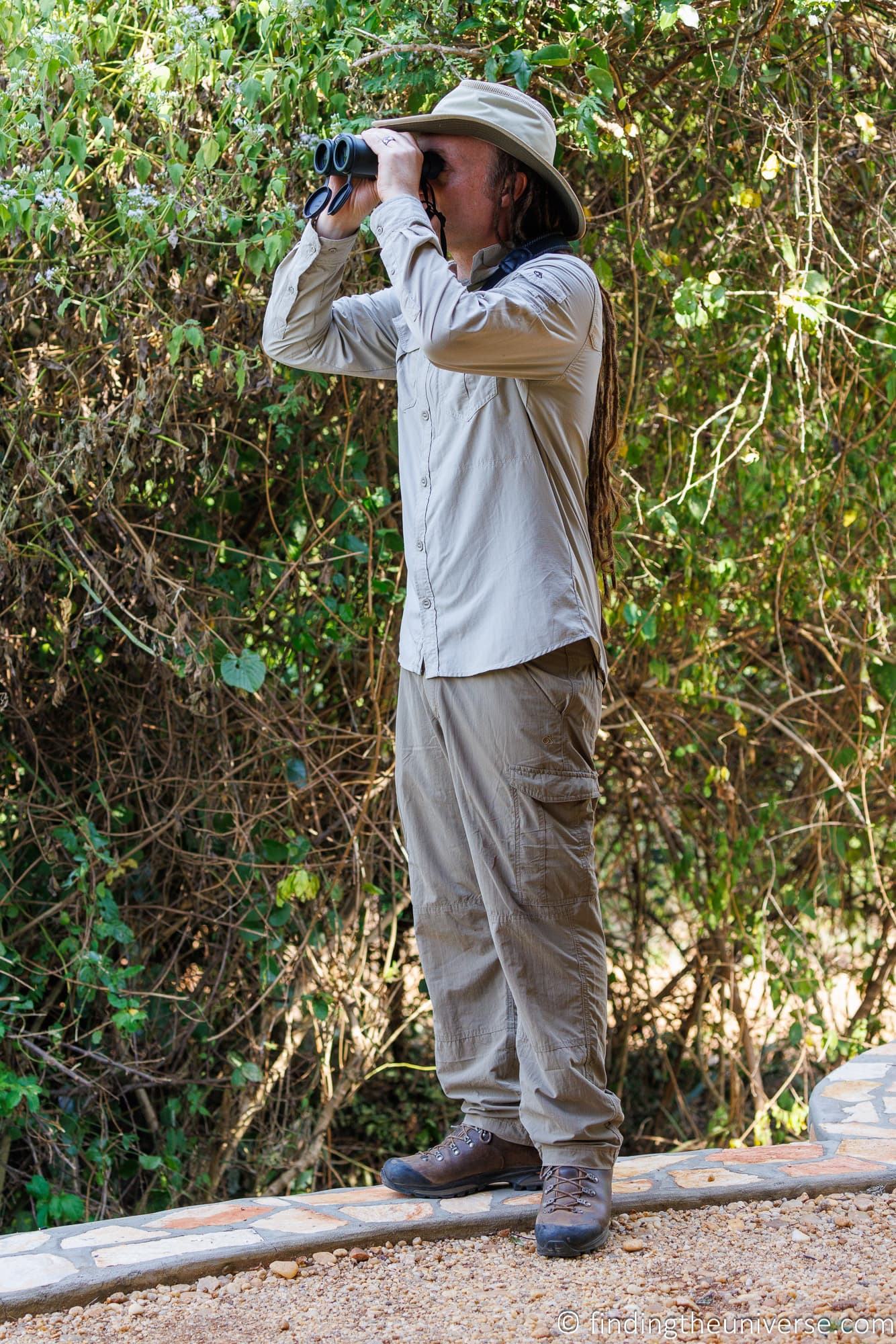
Versatility
When it comes to choosing clothing and putting outfits together, we’d suggest giving priority to clothing that can be worn in multiple situations or in multiple outfits, to avoid having to bring too much clothing.
So a top that works as well on a safari as at an evening meal would definitely be a better choice if possible, compared to bringing multiple options for different occasions.
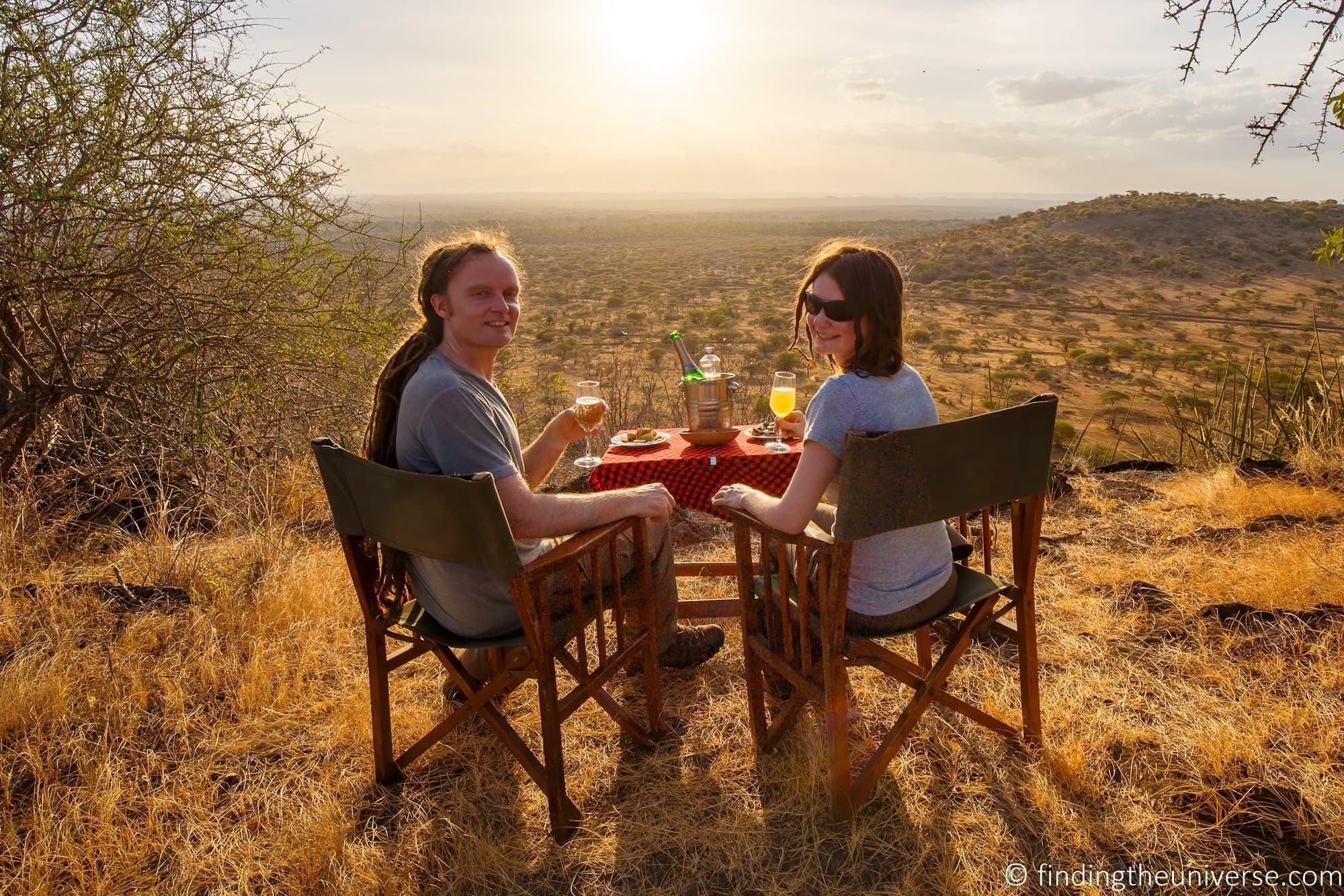
Safari Packing List
We’ll now go through a guide to what we think are essentials for safari, which is based on multiple safaris we have taken, some of which have been over quite prolonged multi-week trips.
Of course, there is no definitive list, and you should adjust this list based on what you feel you need to take with you. But this should give you a good starting point.
Shirts for Safari
Wherever you are going on safari, and whatever the weather, you will need a number of shirts or tops. We usually travel with a number of layers, because even in hot countries our experience is that it can be cooler at night.
So for us, we normally pack a bunch of t-shirts, some long sleeve button-up safari style shirts, and a couple of fleece outer layers.
For t-shirts, we prefer these made of wicking material, which is cool and fast drying. So something like this for Laurence and these for Jess. We also travel with a few cotton t-shirts as well, but note that these tend to hold sweat and not dry as fast.
Next, we also like to travel with button-up shirts that are specifically designed for safari, and for that we like the Craghoppers brand of clothing. We mostly wear long-sleeved ones as these protect against both the sun and insect bites.
Craghoppers make a whole range of clothes which are excellent for all sorts of outdoor activities, but we think they are particularly suited to safari. If you spend time on safari, you’ll likely recognize that this is probably the most common brand worn by more experienced travelers, especially those from Europe.
Their clothes are fast drying, very lightweight, durable, usually have multiple handy pockets, and many of them have built-in insect repellent as well!
For shirts, we both like the Craghoppers Adventure II style, available for men here and for women here. We’ve worn them on safari all across East Africa and they have proven to be very capable items of clothing.
Of course, there are many more options out there, and you can see a range of moisture-wicking fast-drying button up shirts on Amazon here.
Finally, when it comes to general top layers, we usually also pack at least one warmer top which can go over everything else. This can be handy for those cooler early morning safaris or evenings in the camp, when temperatures can drop, especially if you are at higher elevations.
Generally, we prefer a top with a full zip down the front as it allows us to control our temperatures a bit more by zipping or unzipping the front, but this is a personal choice.
For tops, we love clothes from Patagonia. Their sustainable ethos and approach to rewearability is something we really appreciate, plus their clothing happens to be fantastic quality. It is definitely a little on the more expensive side, but it should last you a long time!
Jess in particular really likes her Patagonia full-zip better sweater, and there’s a men’s version as well. We’ve also had good experiences with the North Face range of fleeces, which is my current fleece, and you can see a full range of those here.
If you are on a budget, we have had good luck getting secondhand high quality fleeces and pullovers secondhand from thrift stores or online secondhand clothing websites.
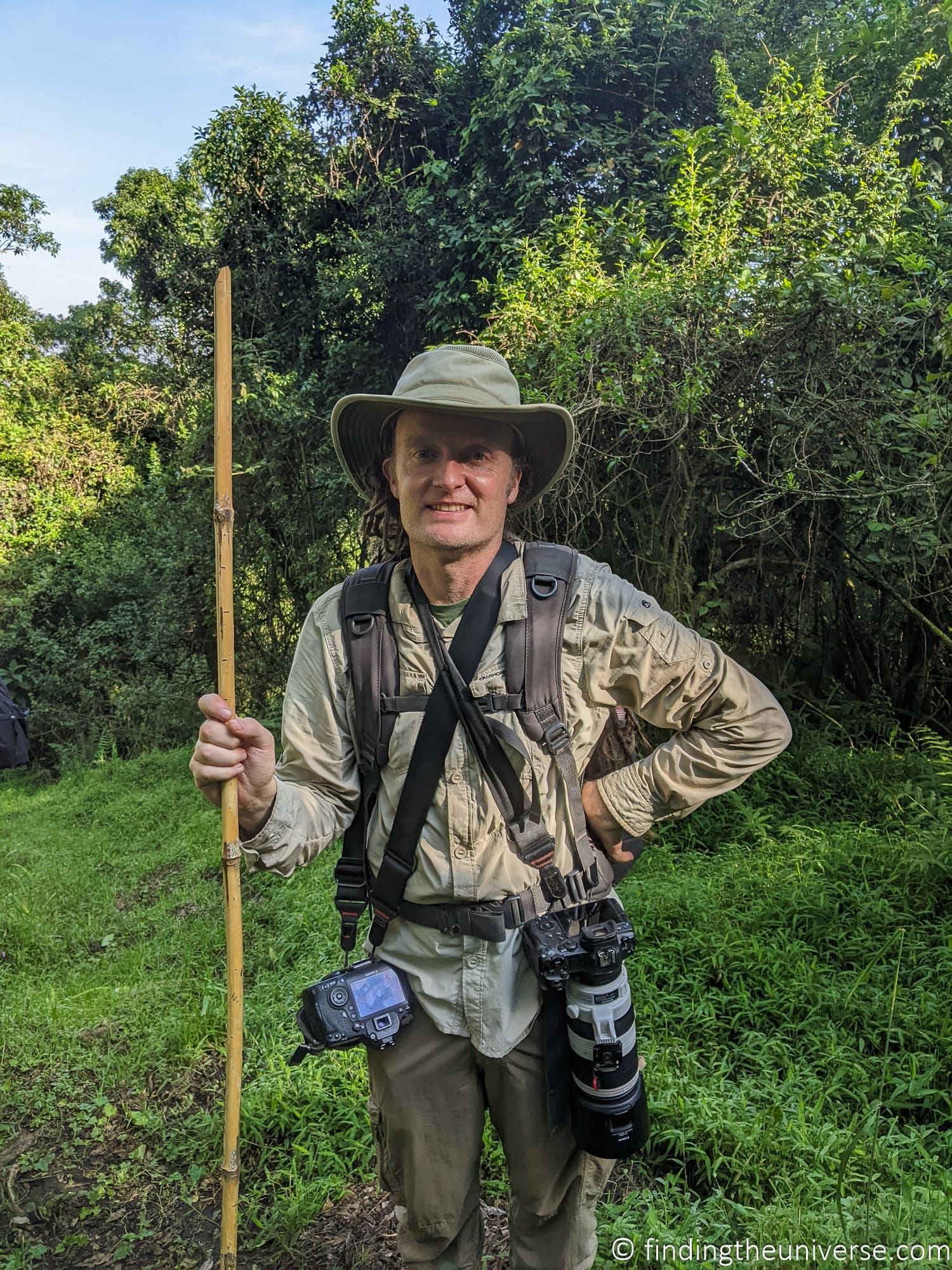
Trousers / Pants / Dresses for Safari
Generally we both prefer to wear long pants for safari, even on hotter days. We like lightweight hiking style pants that offer good sun protection, as well as some protection from biting insects and branches. Jeans generally are a bit too heavy and hot in our experience.
When it comes to specific brands, we again like Craghoppers for their range of pants. Their Insect Shield technology helps keep biting insects away and they have a range of hiking pants with this technology built in. Their products are also very lightweight and fast drying.
When it comes to specific products that we have used, Laurence likes these more baggy cargo style trousers, whilst Jess prefers these slightly more fitted pants.
Again, there are multiple brands offering high quality pants, including these options from Patagonia, and this extensive selection on Amazon.
Jess also likes to travel with some easy wear lightweight dresses which are good for wearing in the evening for dinner and non-safari days.
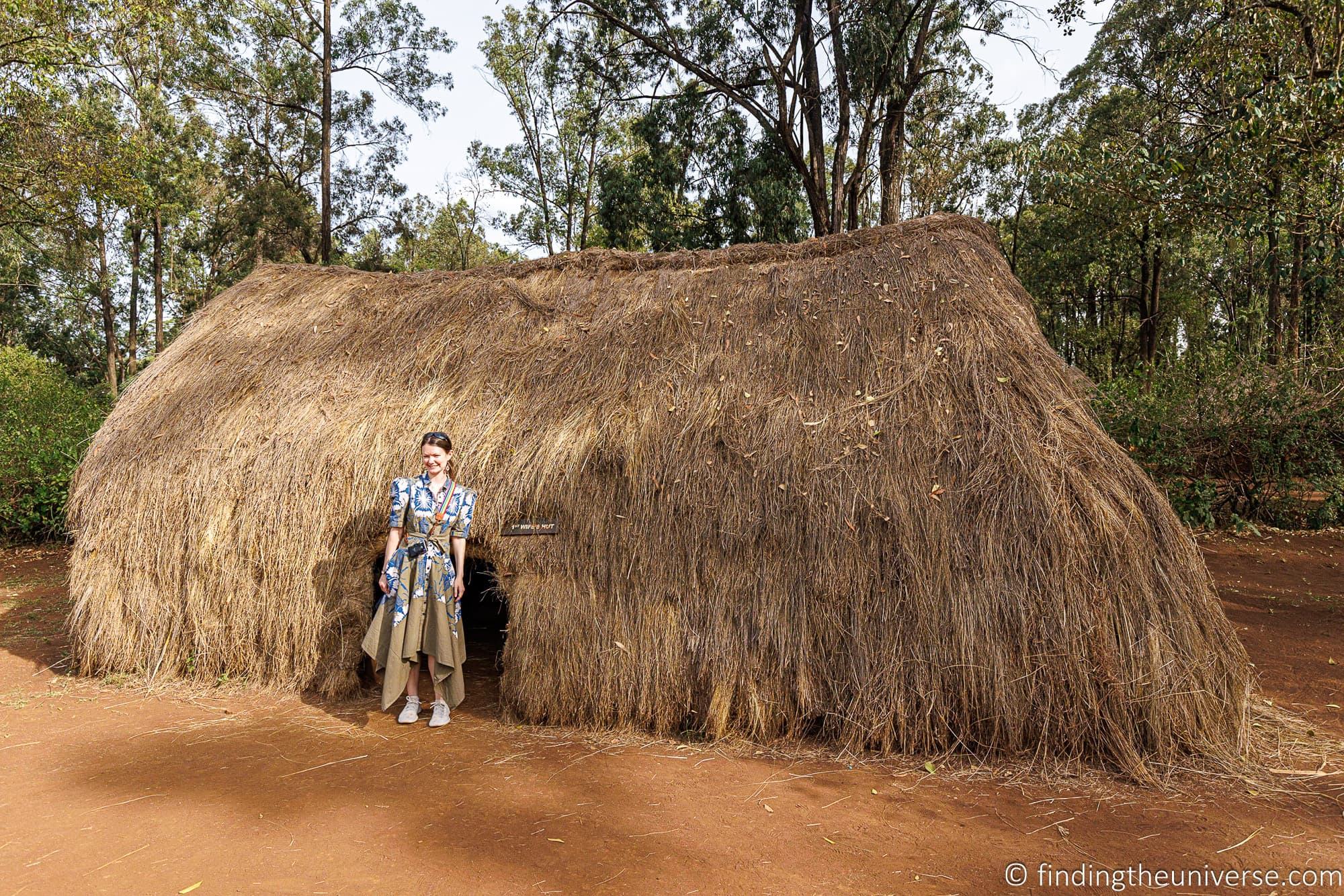
Shoes for Safari
Choosing the right footwear for safari will of course depend on the kind of activities you are going to be doing.
If you will be doing any hiking, including game walks, chimpanzee trekking or gorilla trekking, then we highly recommend a good pair of waterproof hiking boots.
We both have a pair of Scarpa hiking boots, Laurence has these ones and Jess has these.
Of course, there are lot of other great brands. We’ve had various pairs, Jess in particular liked her Merrell hiking boots and she hiked Mt. Kilimanjaro in those.
If your trip doesn’t involve a lot of hiking, then you can probably skip proper hiking boots. They are quite heavy and take up a fair bit of space, so will save you some luggage space if not required.
We just recommend you bring one good pair of comfortable closed-toed shoes. A pair of lightweight flip flops or sandals is also likely a good idea if you plan to spend time relaxing at the pool, resort, or going to the beach.
For more tips on shoes for travel, see our guide to the best travel shoes for men, and the best travel shoes for women.
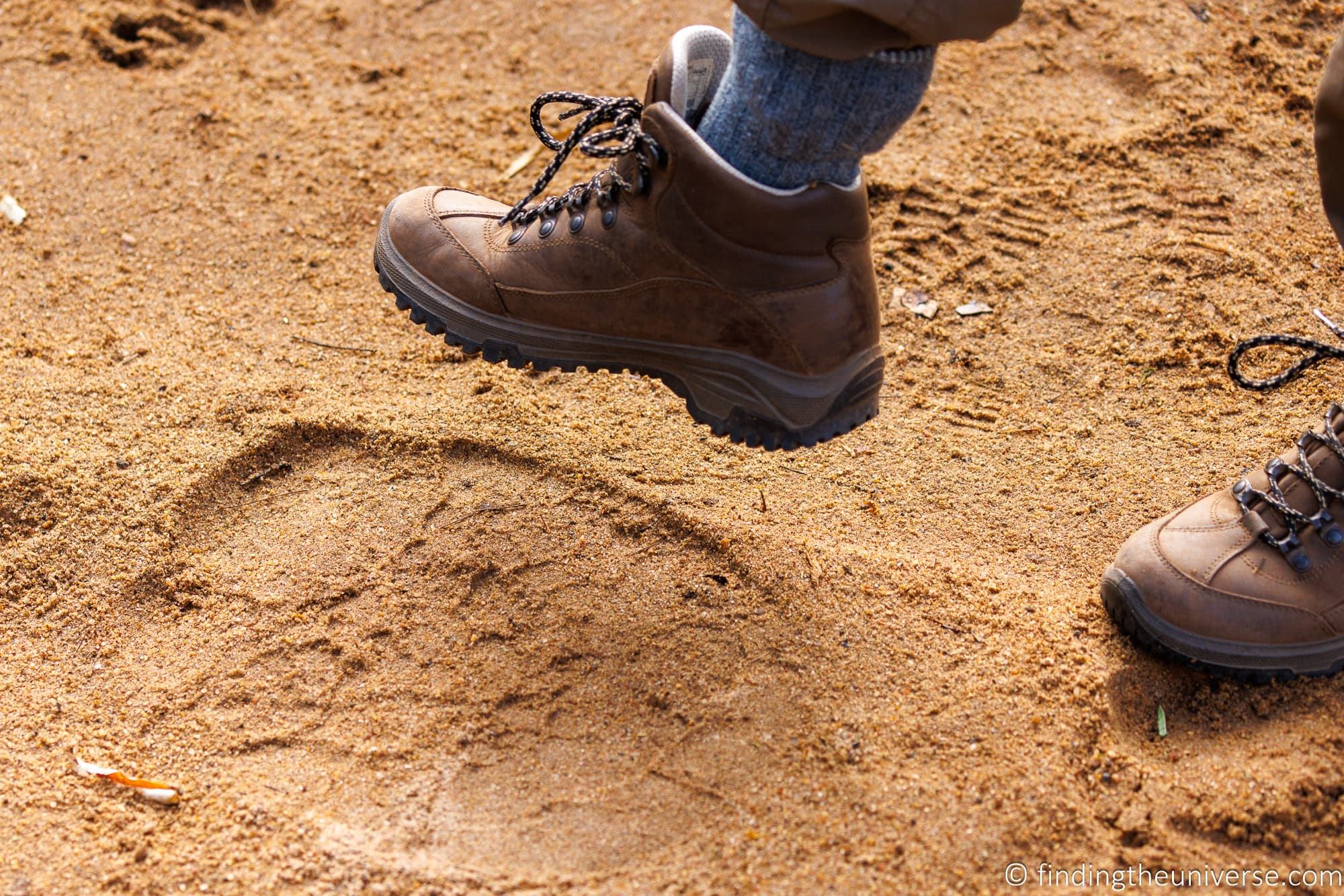
Hats for Safari
Many safari destinations tend to be quite hot and sunny, and you’re going to be spending a lot of time outdoors. So a good hat is going to be essential for your trip. You just want to make sure that the hat you choose has a wide enough brim to shade your entire face. Some may also want one with a neck flap.
We personally love our Tilley hats. They are well constructed, easy to pack, lightweight, machine washable, and come with a very solid guarantee. For safari, we’d recommend the LTM6 Airflo hat, which is what Laurence uses, or for even more cooling, the LTM8 Airflo hat.
We have also had other hats of course. In addition to a Tilley Airflo hat, Jess also has a hat with a foldable neck flap like this one, which keeps the sun off her neck as well as her head. My parents both took hats with sunflaps with them on safari to be able to protect their necks. So that is also a great option.
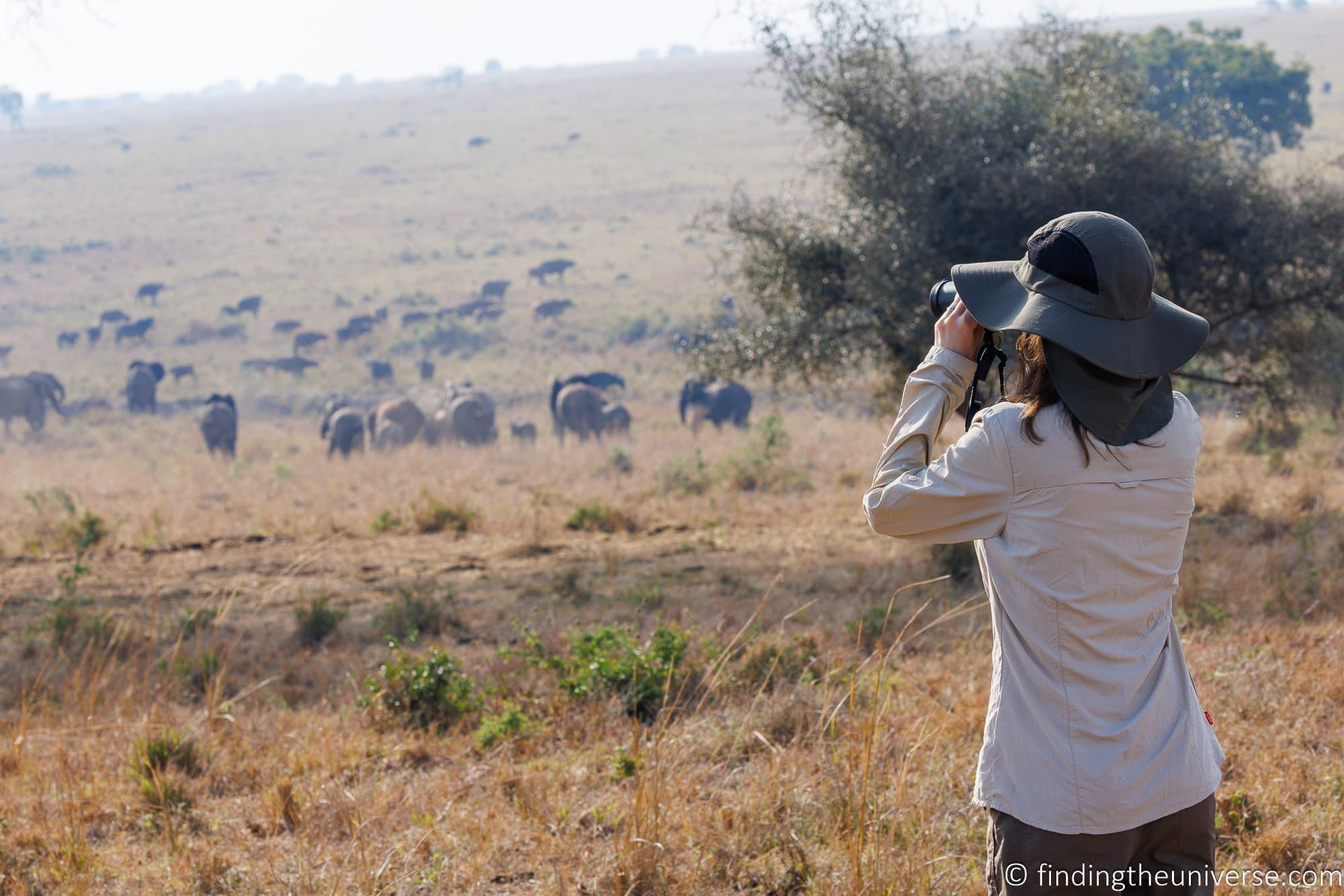
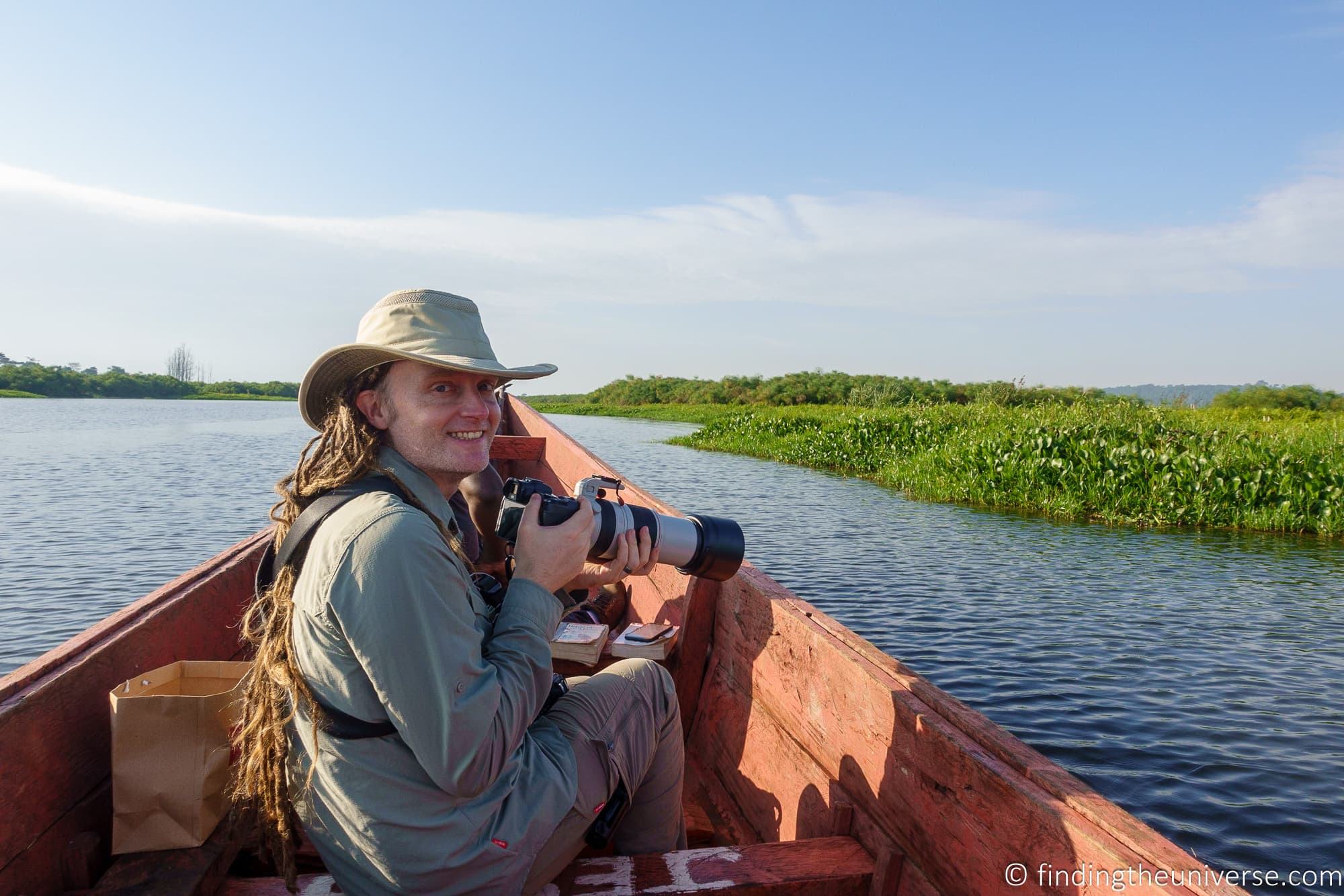
Swimwear for Safari
Whilst you are unlikely to be going for a swim whilst out on safari, what with the risk of crocodiles and hippos, that doesn’t mean you should leave your swimwear at home.
Many safari lodges and camps have absolutely wonderful pool areas, and if you have downtime between game drives on a hot day, then a dip in the pool can be a wonderful way to relax and cool down. Many safaris might also include some relaxation time on a beach or island.
We always pack swimwear when we go on safari for just this reason, and we’ve had some lovely swimming experiences as a result.
You can search for swimwear for men on Amazon here, and for women here.
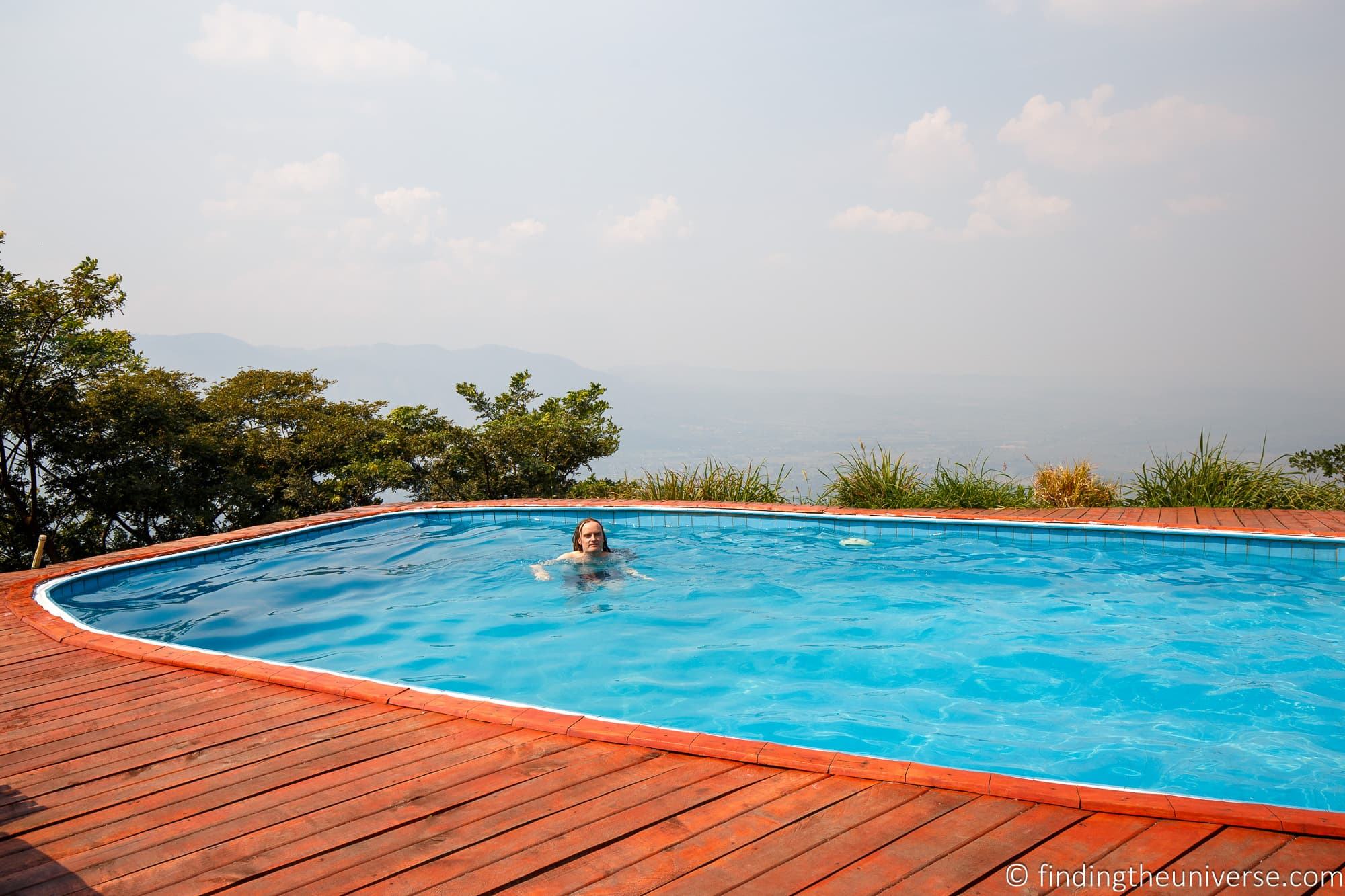
Socks and Underwear for Safari
This one will be a brief entry. Obviously, you’re going to need undergarments and socks for safari!
Our main tips are to be sure to pack enough to last either your trip (if a week or less) or the longest stretch of your trip you plan to go without doing laundry. Ideally pick lightweight and quick-drying underwear and socks that can be easily washed on the go. We tended to handwash these types of items every 4-5 days so we never ran out of them.
If you are looking for a brand, ExOfficio (nylon) or Smartwool (merino wool) are a couple of brands you might check out for travel-friendly quick-drying undergarments.
If hiking or planning to do a lot of walking, be sure to bring good quality hiking socks along. You want good socks that will provide a bit of cushion, wick away moisture, and help prevent blisters. A few brands we like are Smartwool, Darn Tough, and Farm to Feet.
Also, for women, it is a good idea to bring along a supportive sports bra or two. Jess says these are a must-have for bumpy roads and climbing.
Raingear for Safari
Whatever time of year you are planning on going on safari, and whatever activities you will be doing, we still recommend packing some sort of raingear just in case.
This might be a lightweight breathable rain jacket that you can wear over your clothes, or a pack away rain poncho. Just make sure whatever you bring has a hood.
We always travel with rain protection of some kind, just in case.
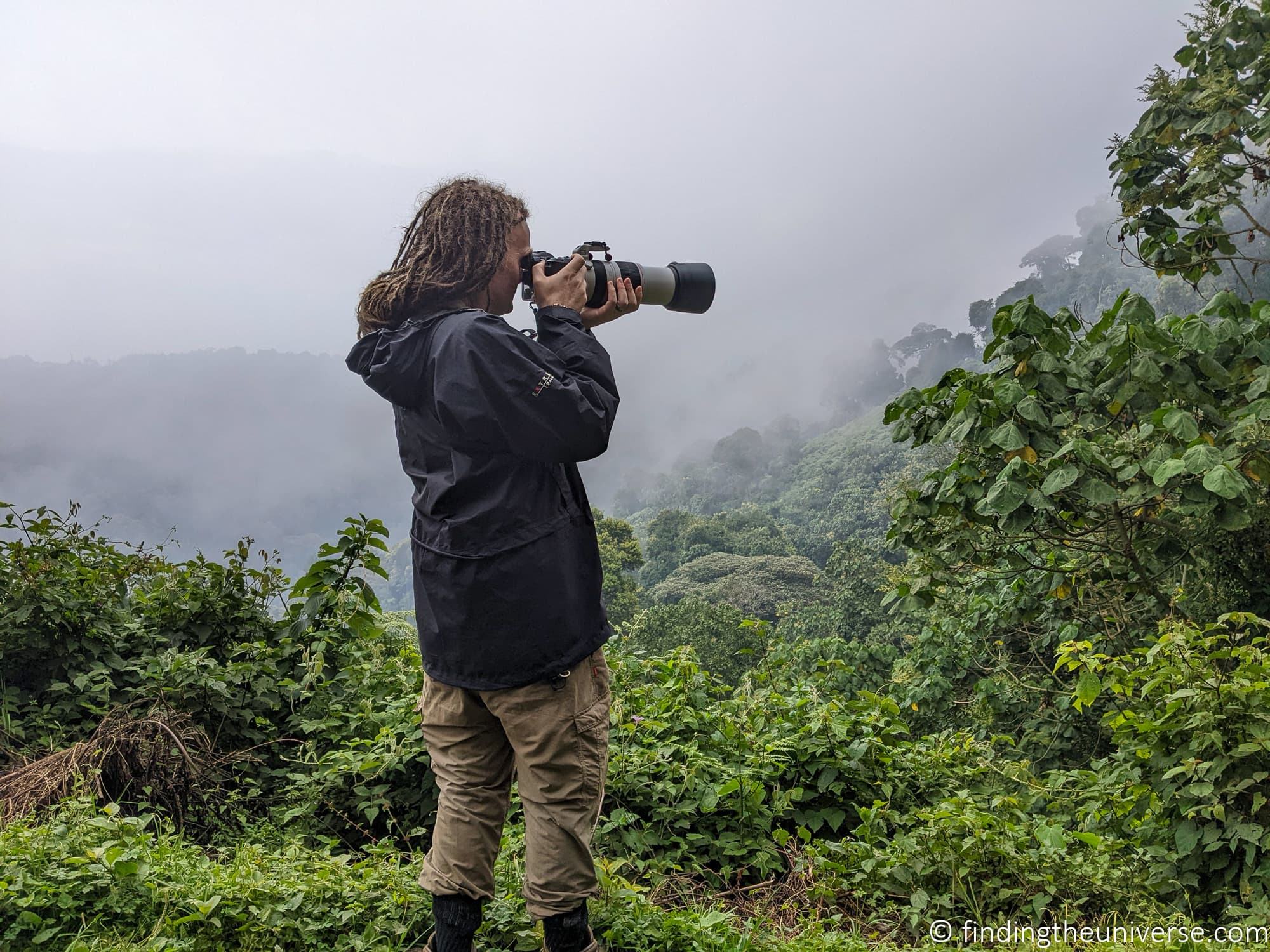
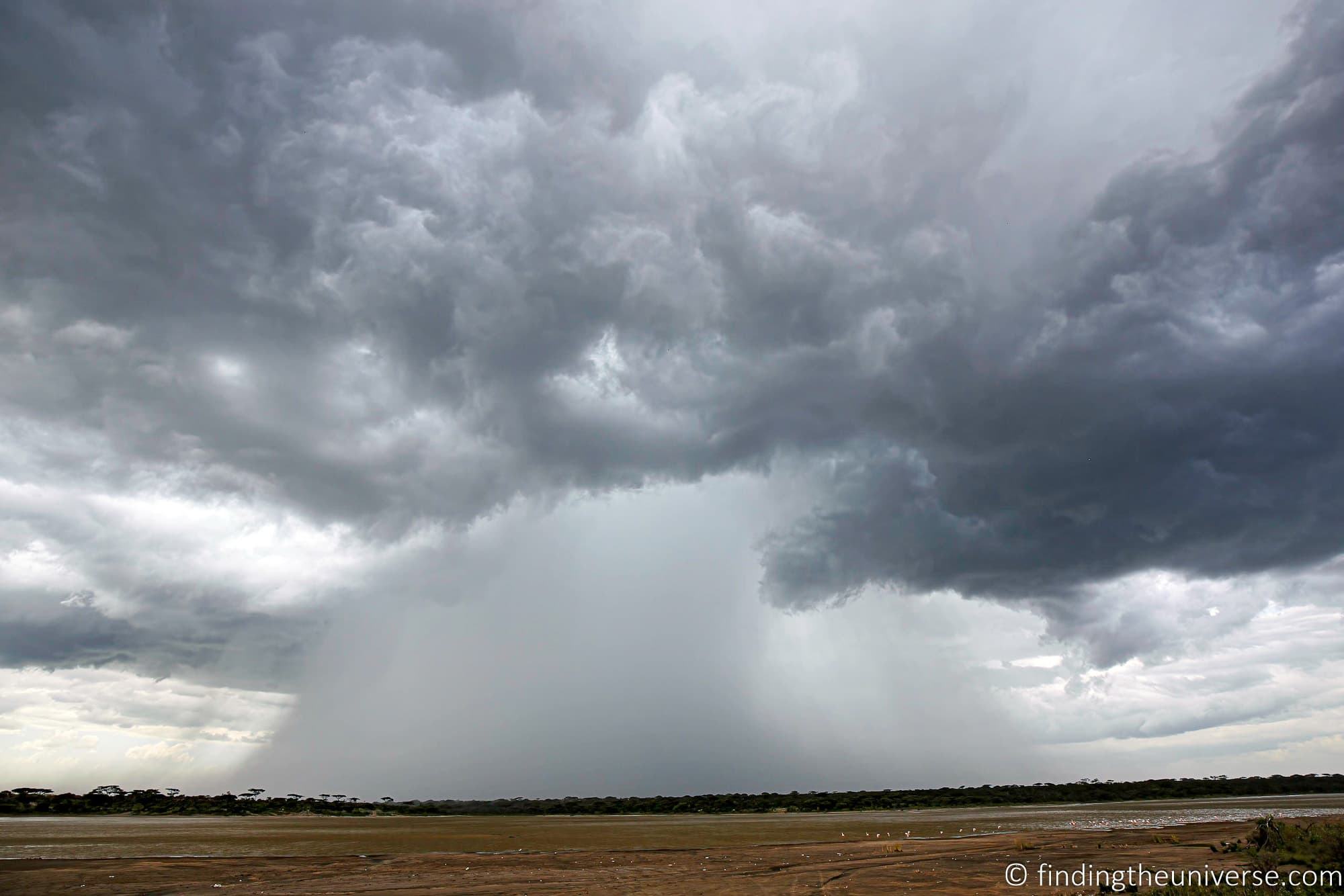
Camera Gear for Safari
I’ve already written a very comprehensive guide to the best camera for safari, as well as the best bean bag for safari, so I would definitely recommend reading those if you want to get some great images on your trip.
In summary though, if you want to get great images of wildlife, you will need a couple of things. First, a camera with a good zoom lens. Second, a bean bag to stabilize your gear.
When it comes to specific camera suggestions, many folks find that a bridge camera like the Sony RX10 IV is a good option. At the higher end of the budget and size spectrum, you’ll want a high end dedicated mirrorless camera with at least a 400mm zoom lens.
A camera can be a huge investment, so we also suggest renting as an option to consider. A company like Lens Rentals will allow you to rent a lens and a camera body at a much lower cost than buying it outright.
They also give you the option to purchase the gear rather than return it, so if you love the experience then you can invest having tested the gear out.
If you decide to rent through Lens Rentals, you can save 15% on any rental by using our discount code, LAURENCE15. Just enter it at checkout.
We also highly recommend a photography bean bag if you will mainly be shooting from inside vehicle. We use these extensively on safari trips, and they are really an invaluable item.
We have a guide to some of the best options photography bean bags here, but recommend checking out either the Kinesis SafariSack 4.2 or LensCoat LensSack Pro Jr as a starting point.
Finally, don’t forget a good camera bag to keep your gear safe, lots of spare batteries, memory cards, your chargers, and ideally a waterproof camera cover to protect your gear in case it rains.
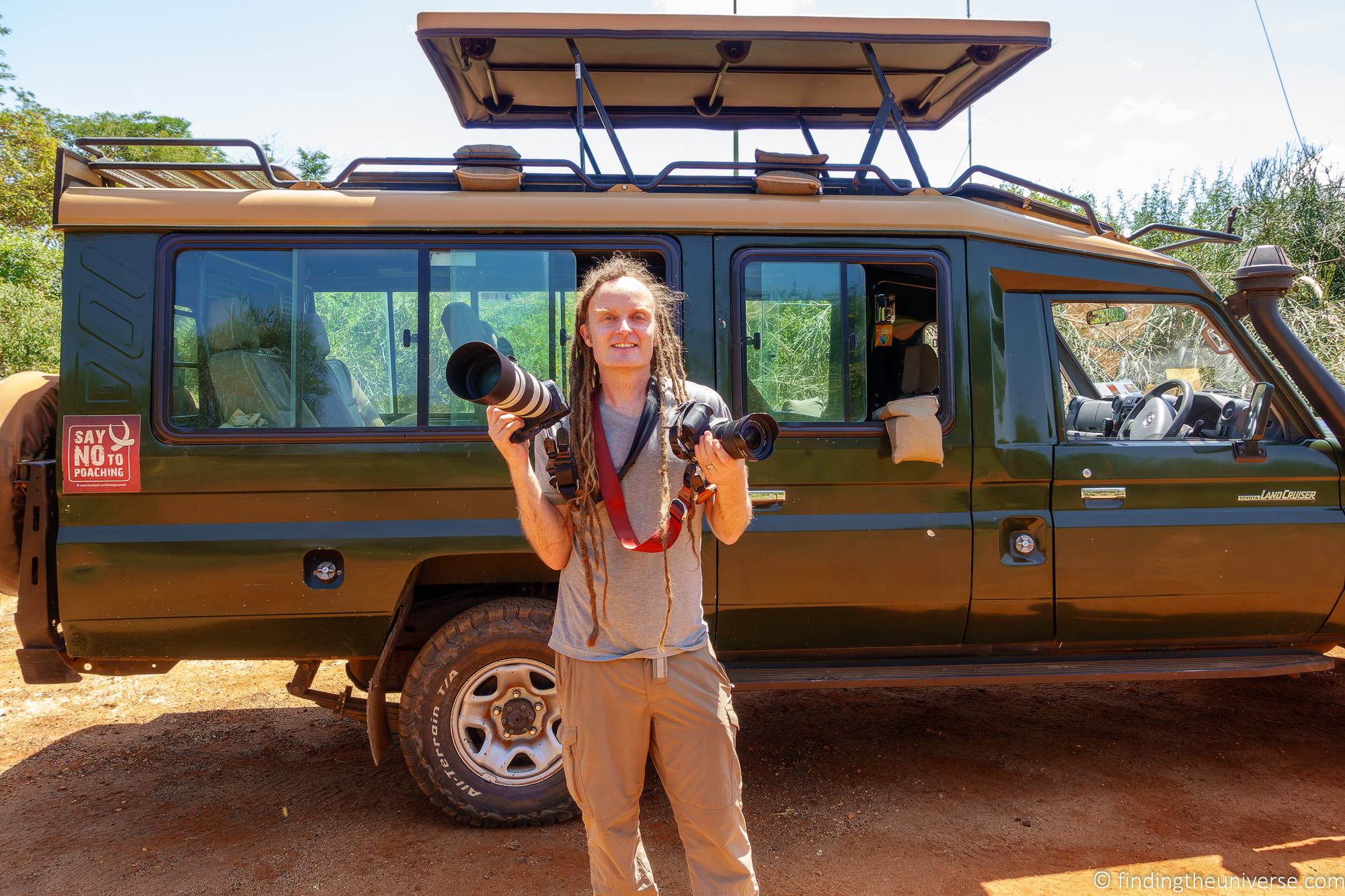
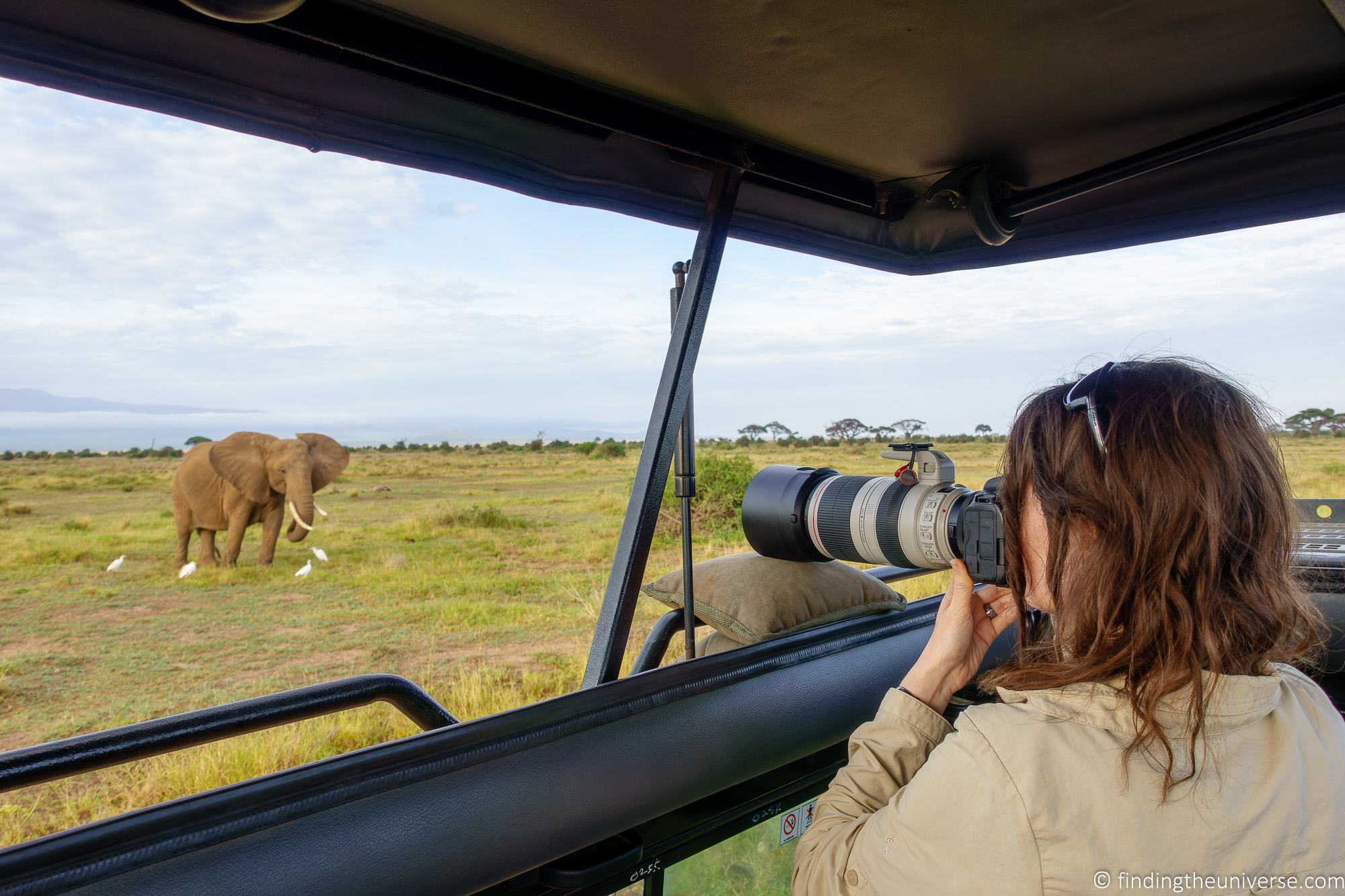
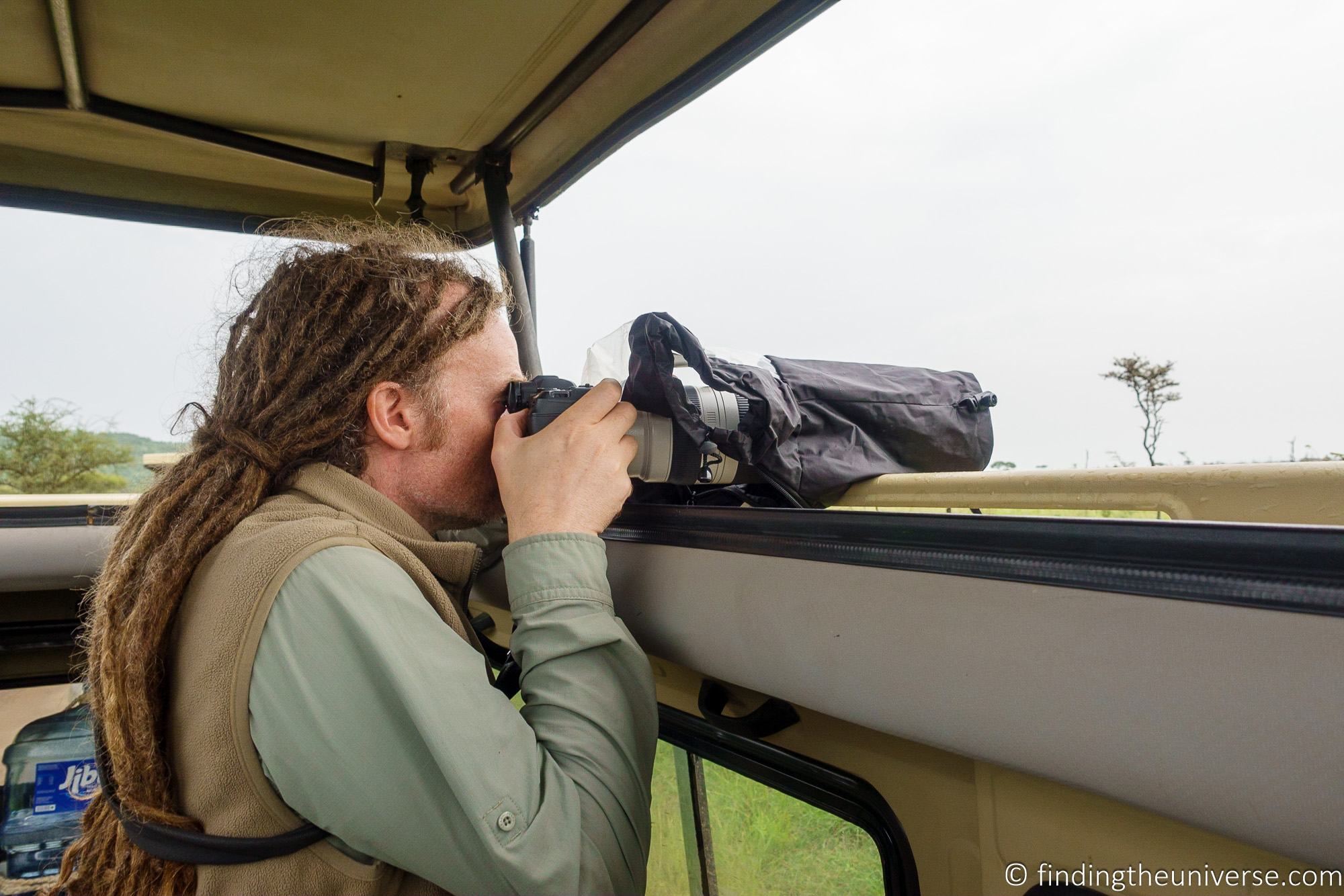
Binoculars for Safari
We can highly recommend taking a good pair of binoculars with you when on safari. Not every bird or animal is going to conveniently place itself within easy viewing range, and a pair of binoculars will let you get a much better view of the wildlife.
You don’t need to spend a massive amount to get a reasonable pair of binoculars, but we’d suggest setting a minimum budget of around $80 USD. Below this price point build and image quality will likely suffer.
We’d suggest looking for a pair with around an 8x to 10x magnification.
Some recommended options include:
- Vanguard Vesta 8×25. a great entry level option if don’t want to spend a fortune. They are very light and offer both waterproofing and fogproofing. These are a great value option, plus you can save 20% on the price by using our exclusive discount code FindingTheUniverse at checkout on the Vanguard store.
- Celestron Nature DX 8×42. This is a well-regarded and popular budget option. Fog and waterproof with a tough construction.
- Vanguard VEO HD2 8×42 binoculars – an excellent, well priced and still reasonably compact pair of binoculars featuring extra low dispersion glass carbon-composite construction, waterproofing and fogproofing. We use a pair like this.
- Nikon 8×42 Monarch M5 – lightweight, durable, waterproof and fogproof. Nikon make quite a few binoculars, and these are a popular mid-range option.
- Swarokvski 8.5×42 – we had a pair of Swarovski binoculars loaned to us for several months, and they are magnificent, with wonderful bright and sharp images. This pair offers excellent performance, but are definitely at the premium end of the price spectrum!
As you can see, there’s no shortage of choice across a range of price points. If you are interested in bird watching on safari, or getting into birding, see our beginners’ guide to birdwatching for some tips.
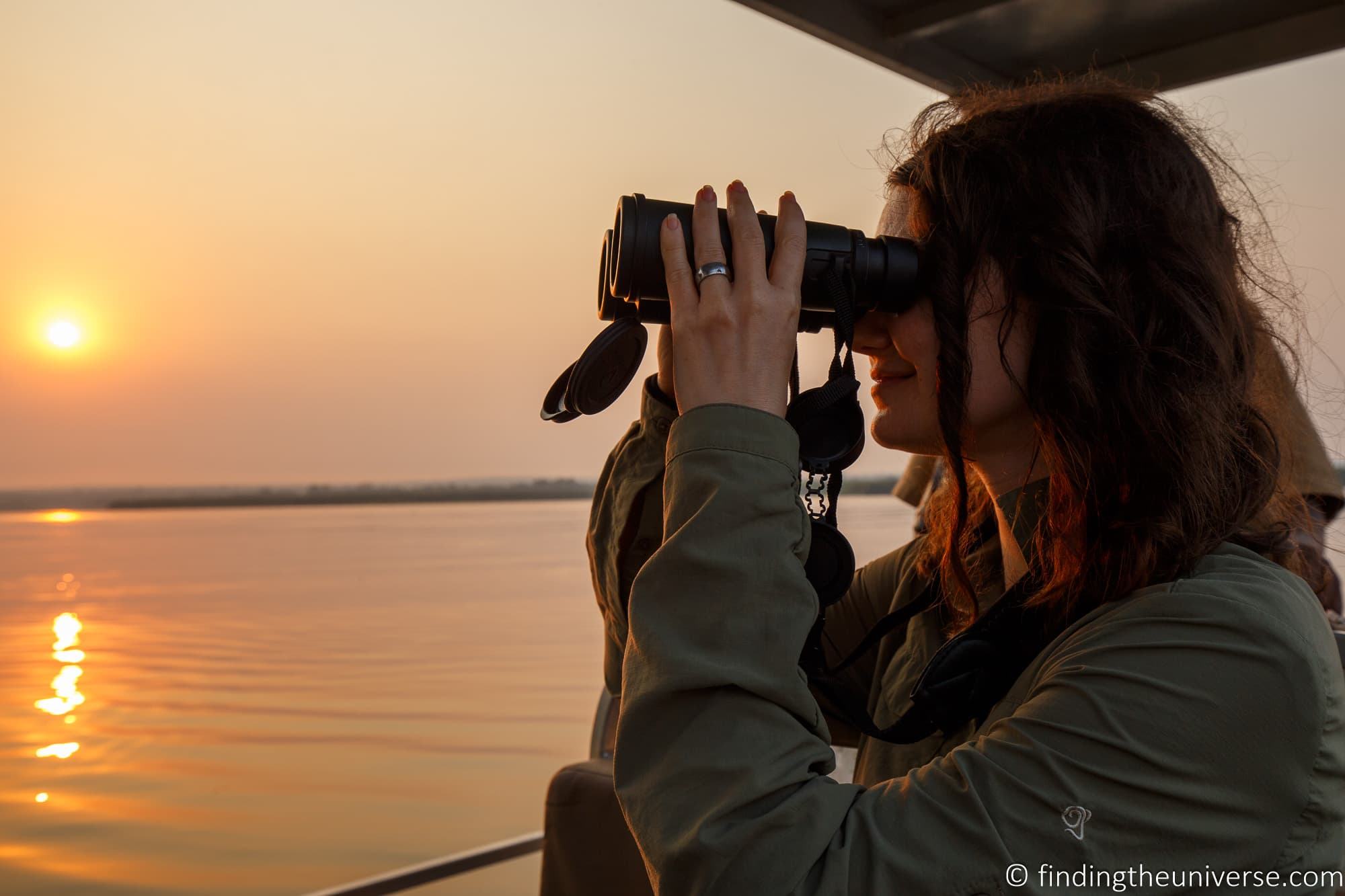
Electronics for Safari
You don’t really need a lot of electronics for safari, however there are a few things you might find useful.
First, a USB battery pack. These will let you charge your phone on the go, as well as any other device that uses USB.
Whilst the majority of accommodation options we’ve stayed at on safari have had had power, even the most remote, this isn’t always guaranteed. So a USB battery pack is a great fallback option.
The second thing we recommend, if your camera has removable batteries, is to see if you can get a USB powered battery charger for it.
This is because sometimes, more remote lodges don’t have regular plug sockets. However, they do often have USB outputs. While some cameras support direct charging by USB, this is by no means the standard.
We personally travel with a USB charger which is compatible with our DSLR and mirrorless Canon cameras, which both use the same type of battery. You will need to search for a USB battery charger that is compatible with the batteries your camera uses.
You can see some examples for a range of brands on Amazon here.
Insect Repellent for Safari
One slightly less exciting aspect of safari is the potential for biting insects. Mosquitoes are the obvious one, but there are a range of other insects that can bite you.
Ideally, you want to avoid being bitten if you can help it. Many insects carry various diseases, including malaria, yellow fever, dengue fever, and so on. Whilst you can take medication or vaccines to help prevent some of these diseases like malaria (definitely recommend considering taking antimalarials), prevention is also a really important step.
With this in mind, a good insect repellent like this is a must for safari. Most experts recommend products with DEET in, which are generally regarded as the most effective against most biting insects, including mosquitoes. However, there are also some DEET free options out there for those who want to avoid it, just note they may not be as effective.
Also for those planning to do much trekking, hiking, or walking, depending on your destination, you will also want to think more about crawling insects like safari ants, leeches, stinging caterpillars, ticks, etc. Generally insect repellent along with long sleeves, long pants, and pulling hiking socks up over your pants are fine to avoid these for most people.
Those going to wetter areas and jungles might also want to consider leech socks or gaiters for those going into wetter areas like jungles where leeches are common.
We own these leech socks and they work great, but they are probably overkill for most people on safari trips. But if you have gaiters for hiking anyway to keep out dirt and stones, these can generally also work to help guard against leeches and ticks.
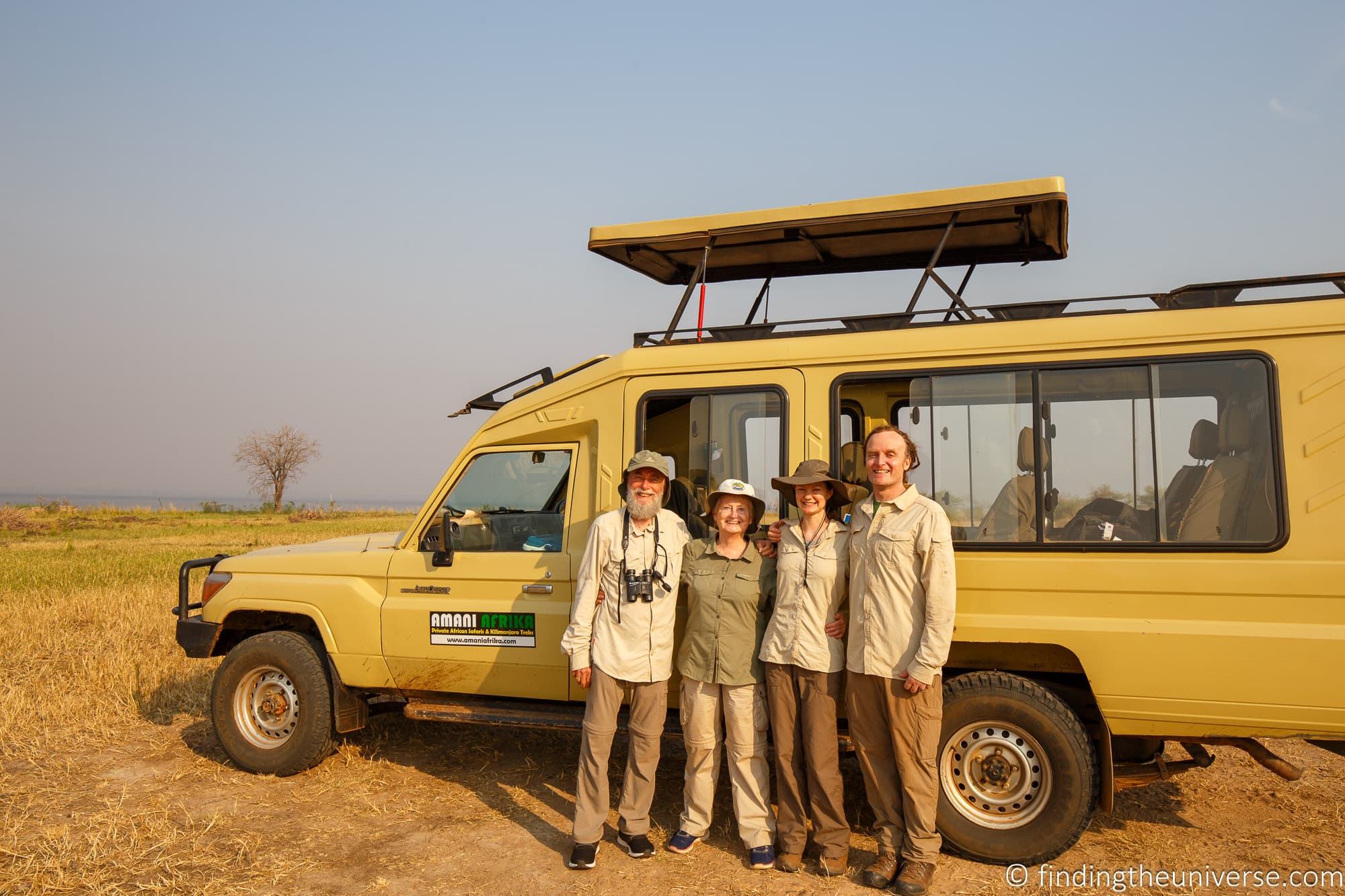
Toiletries / Medicines for Safari
You will want to bring a range of toiletries and medicines with you, some of which should be fairly obvious, and some which may be less obvious.
Falling into the latter camp, we always travel with and recommend rehydration salts. Dehydration is no joke, and drinking plenty of water is really important. However, as you sweat you can lose salt, and rehydration salts can help replace what you lose.
It’s also important to remember that you may be in some pretty remote places and it is good to be prepared to be able to tend to minor health issues such as cuts, scrapes, blisters, bug bites, headache, common stomach complaints, etc.
Here’s a quick list of things to think about packing in your toiletry / medicine kit for safari:
Of course, your list may vary somewhat but we think the above should be a good starting point.
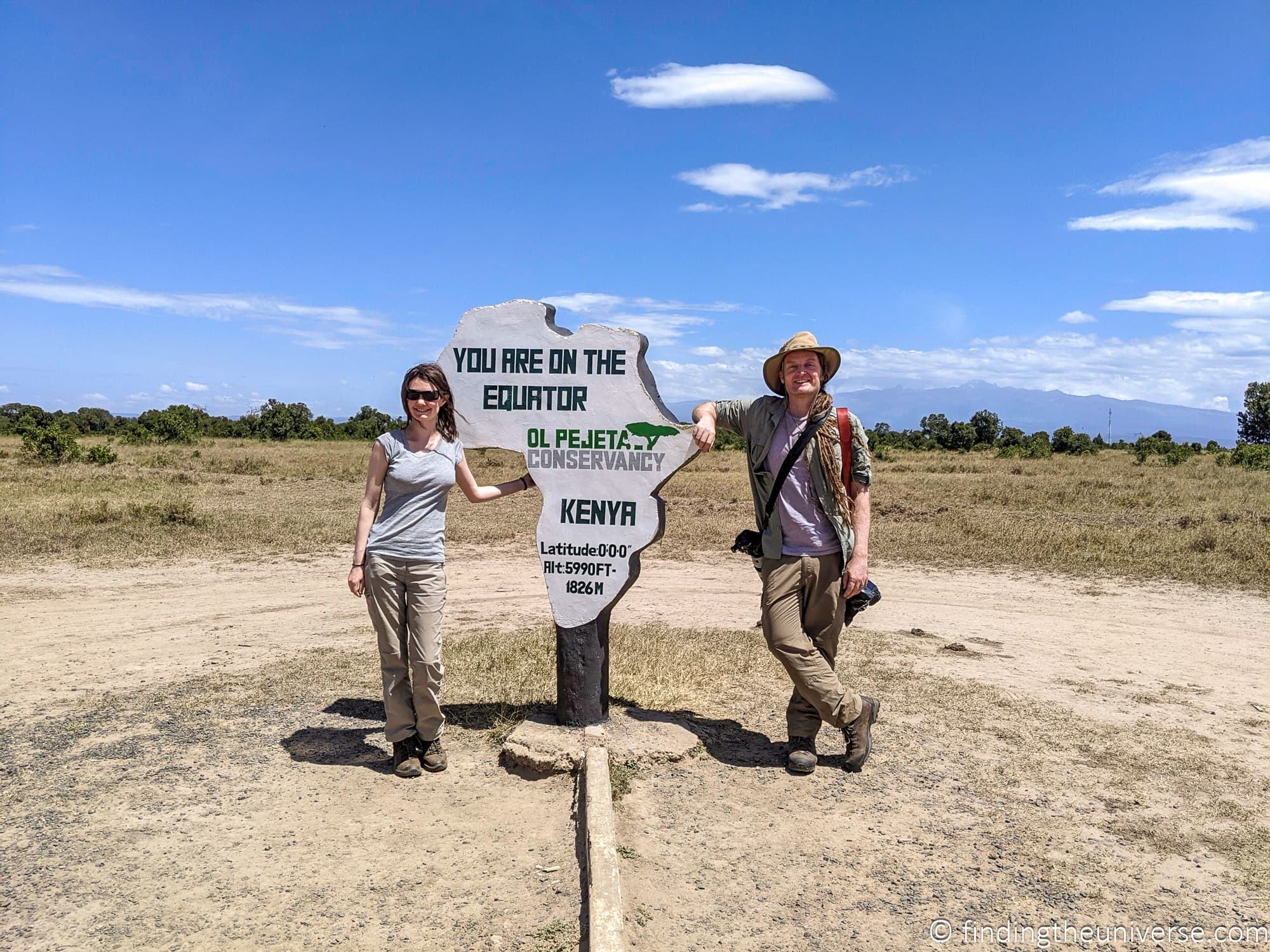
Laundry on Safari
Depending on how long your safari trip is, it’s possible that you might need to do a little laundry as you travel. We’ve done a couple of five-week safari trips, and we had to do laundry a few times on both of those trips.
Whilst many lodges and hotels will do your laundry for you if you stay more than 1 night, you can also normally just handwash a few items yourself, which is what we often end up doing. In hot countries it can often dry in an afternoon.
The main things you will need are going to be some form of travel wash, a sink stopper, and a portable clothesline to hang your clothes.
For laundry wash in a travel sized bottle or tube we like the Dr. Beckmanns travel wash, Sink Suds, or the Sea to Summit Wash, all of which we have used to do laundry whilst traveling all around the world. Or just put your favorite liquid laundry detergent in a reusable plastic or silicone bottle and pack it along.
For a clothesline, there are lots of portable clotheslines on Amazon. We particularly like this one as it packs away small and you don’t need to pack pegs. For a sink stopper, Jess has been using this one for over 10 years.
For more tips on laundry, see our complete guide to laundry when you travel.
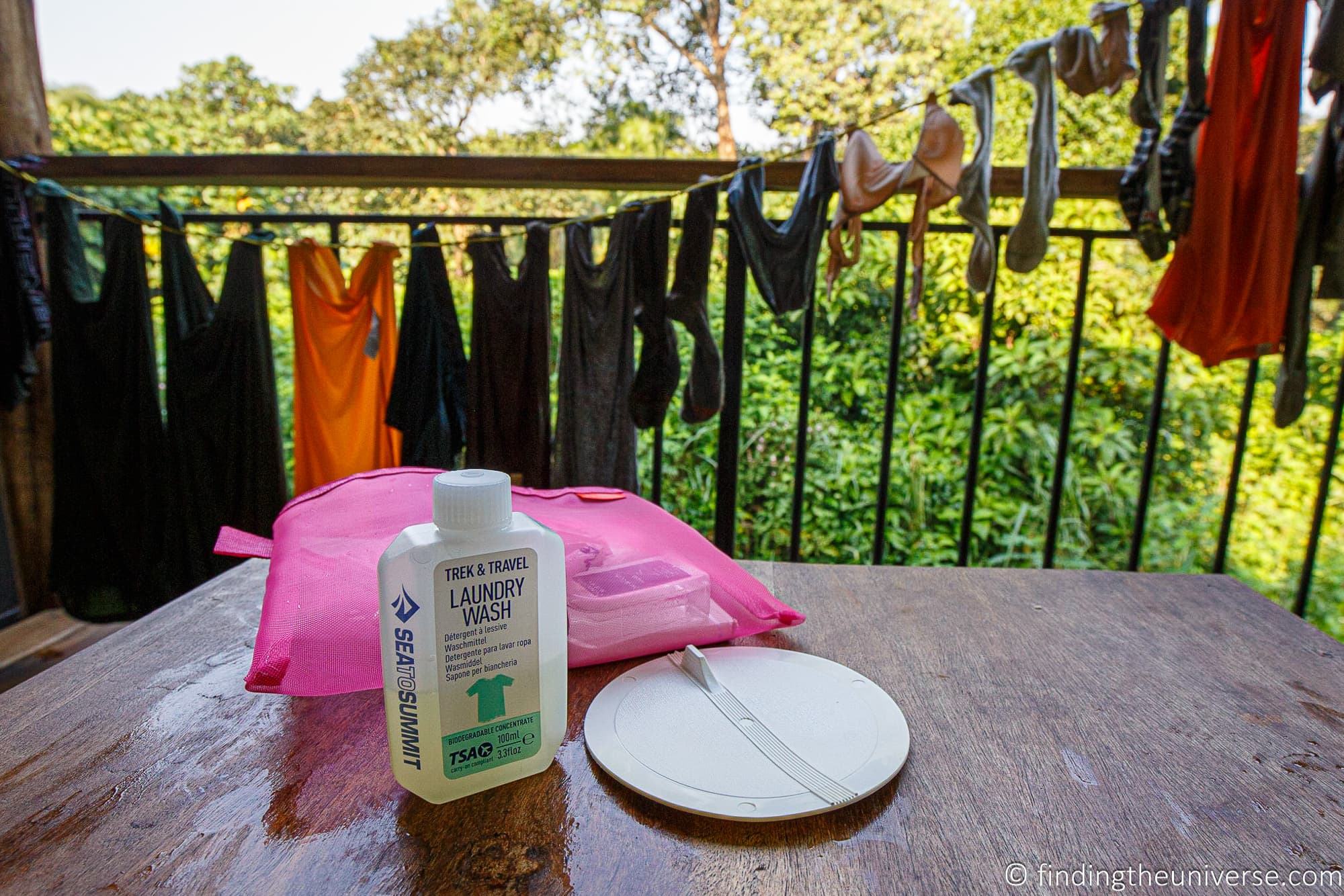
Luggage for Safari
When it comes to choosing what to pack all your belongings into for your safari trip, a lot will come down to the type of trip you are taking, especially around the transport.
If you’re going to be using small planes for example, this will have a big impact, and you will like find a sturdy duffle travel bag like this might be the best option.
You might be wondering if wheeled luggage makes sense for safari. In our experience, the majority of accommodation options don’t really suit wheeled luggage as the ground is simply too rough. So whilst it will be nice at the airport, beyond that you’re likely going to have to carry the bag (or rely on the enthusiastic hotel staff).
However, if you already have wheeled luggage and won’t be taking small planes, then by all means don’t feel you need to purchase new bags. We’ve taken a number of safaris with hard sided wheeled luggage and it worked out great.
As well as larger luggage, we highly recommend bringing a small backpack or shoulder bag that you can use on a day-to-day basis. This can be used to carry things like your water bottle, battery charger, guide books, suncream and insect repellent, for example.
We use a small Osprey day pack as well as a larger Vanguard camera bag for our camera gear on a day-to-day basis.
If you’re looking for a new bag anyway, we have no hesitation recommending Eagle Creek or Osprey specifically for safari.
For hard sided luggage with wheels, we use and can recommend Level8 or Delsey, both of which we have used on trips around the world including safaris (without domestic flights).
For camera gear, we use Vanguard for our camera bags, they offer a great mix of high quality and great value. Laurence has been a Vanguard ambassador since 2014 and is always happy to recommend their gear.
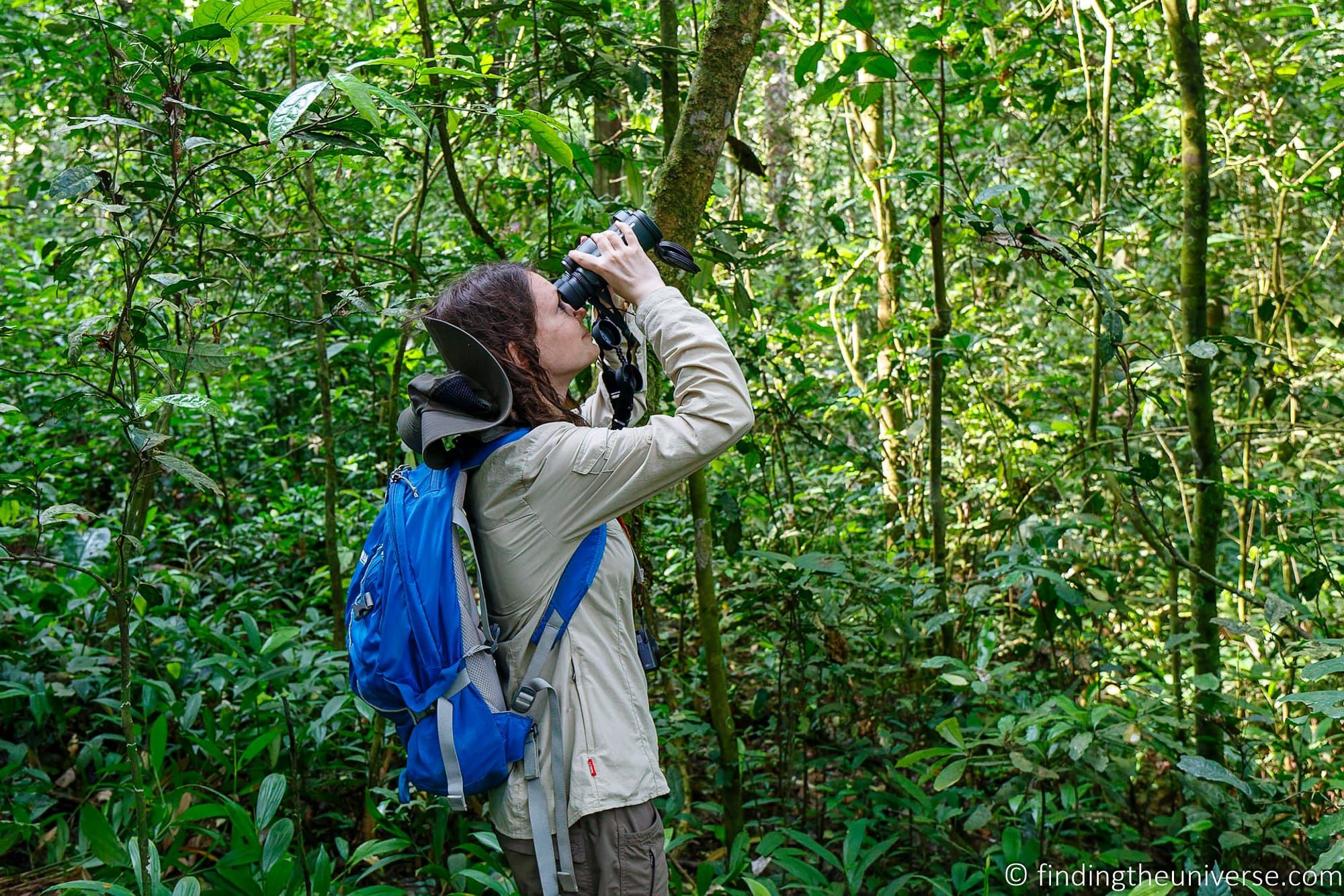
Books for Safari
When you go on safari you are going to be seeing a lot of new animals and birds.
Your guide will normally be very knowledgeable to help you identify what you are seeing, but it is also nice to be able to develop your own recognition skills.
We’d also often see birds or animals around our hotel when we were not with our guide and want to know what they were.
For this reason, we recommend bringing along a guidebook or two to the likely animals and birds you might see. Whilst your guide will probably have a giant and super comprehensive book, we suggest that a smaller book that covers the most common animals and birds will be more practical for packing.
We particularly like the Pocket Guide books, which we have used on various trips. For example, there’s the Pocket Guide to the Birds of East Africa, the Pocket Guide to the Mammals of East Africa, and the Pocket Guide to the Mammals of Southern Africa.
We have found that having a small reference guide can definitely make the safari experience a lot more fun and hands on, and well worth the small investment.
Reusable Water Bottle / Water Filter
You will definitely need to drink a lot of water on safari. Unfortunately, most safari destinations do not have safe drinking water, meaning you need to either drink bottled water, or figure out a way to purify it yourself.
We prefer the latter option as it means we can cut down on plastic waste. Depending on your safari operator, they may also purchase a large refillable water bottle that you can refill your own bottle from. Some hotels also filter their own water on site.
In either case, we highly recommend travelling with at least one refillable water bottle per person on your trip. Just make sure to get one with a lid that seals and doesn’t drip and one that will fit into a standard cup holder or can be placed in the back of a vehicle seat pouch.
For water bottles, we use and love the Klean Kanteen range, and they have a range of bottles to choose from. Jess uses the classic, whilst Laurence likes the wide mouth version.
If you decide to go down the route of filtering your own water, we recommend reading our guide to safe drinking water when travelling, as well as the best water filters for travel, which contain lots of useful advice and information to help you pick the right product for your trip.
If you have questions or want advice based on our experience, just ask in the comments section of this post or in either of those water related articles.
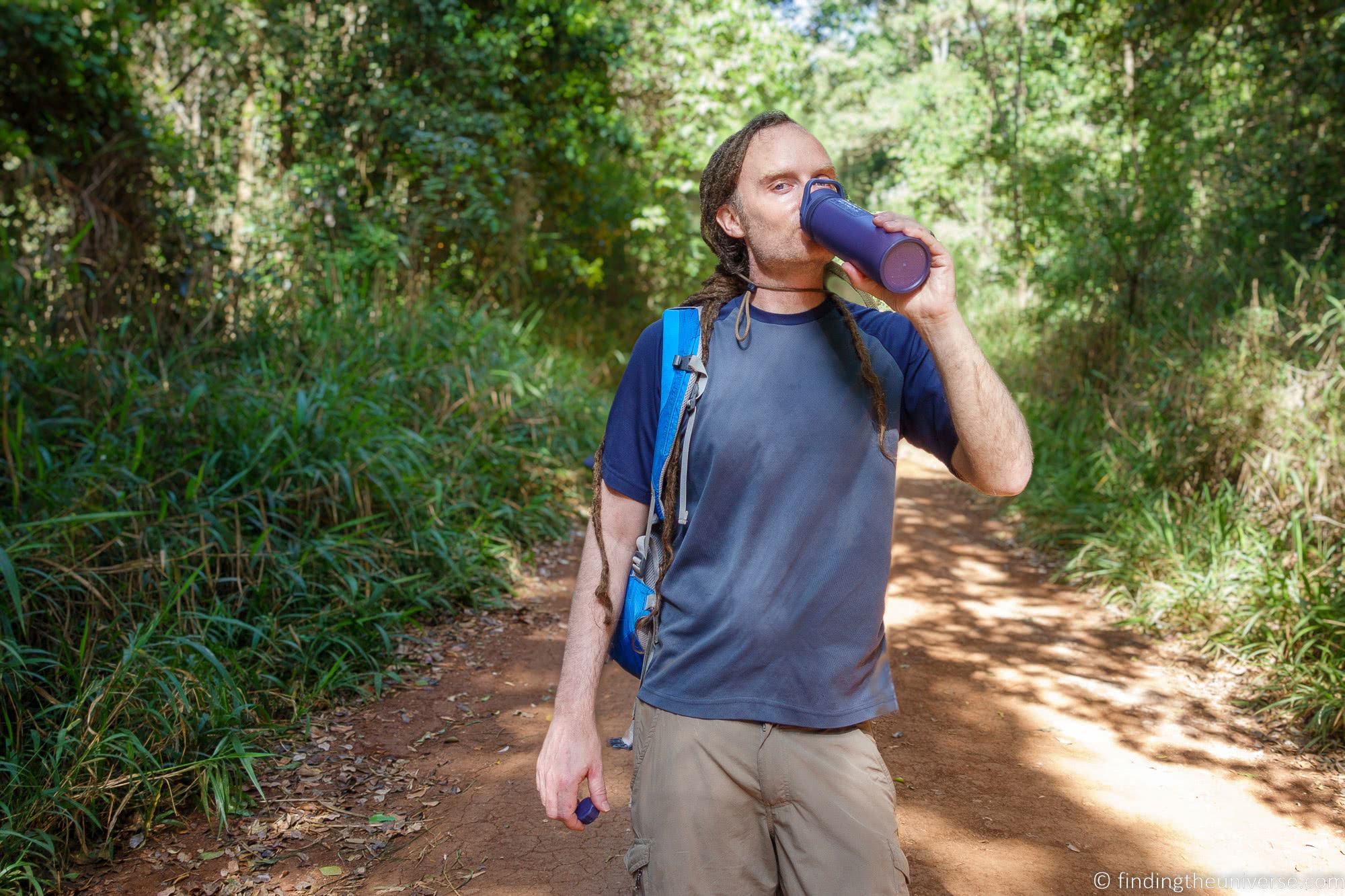
Entertainment Items
Whilst a safari is very entertaining in of itself, there will be periods of downtime, such as long drives between game reserves, flights, or afternoon and evening periods between game drives.
For these periods, you may want to bring some entertainment. We always like to travel with a pack of playing cards for example, as well as some books to read.
Many hotels and safari lodges will have a small book swap service, so you can often swap books as you go. A Kindle or similar eBook reader can also be a good investment if you read a lot.
Another thing we love to do when we travel is to keep a travel journal. On safari this can serve as a reminder of what we have seen and done each day, and it makes for a lovely keepsake.
See our guide to the best travel journals for some of our favourites.
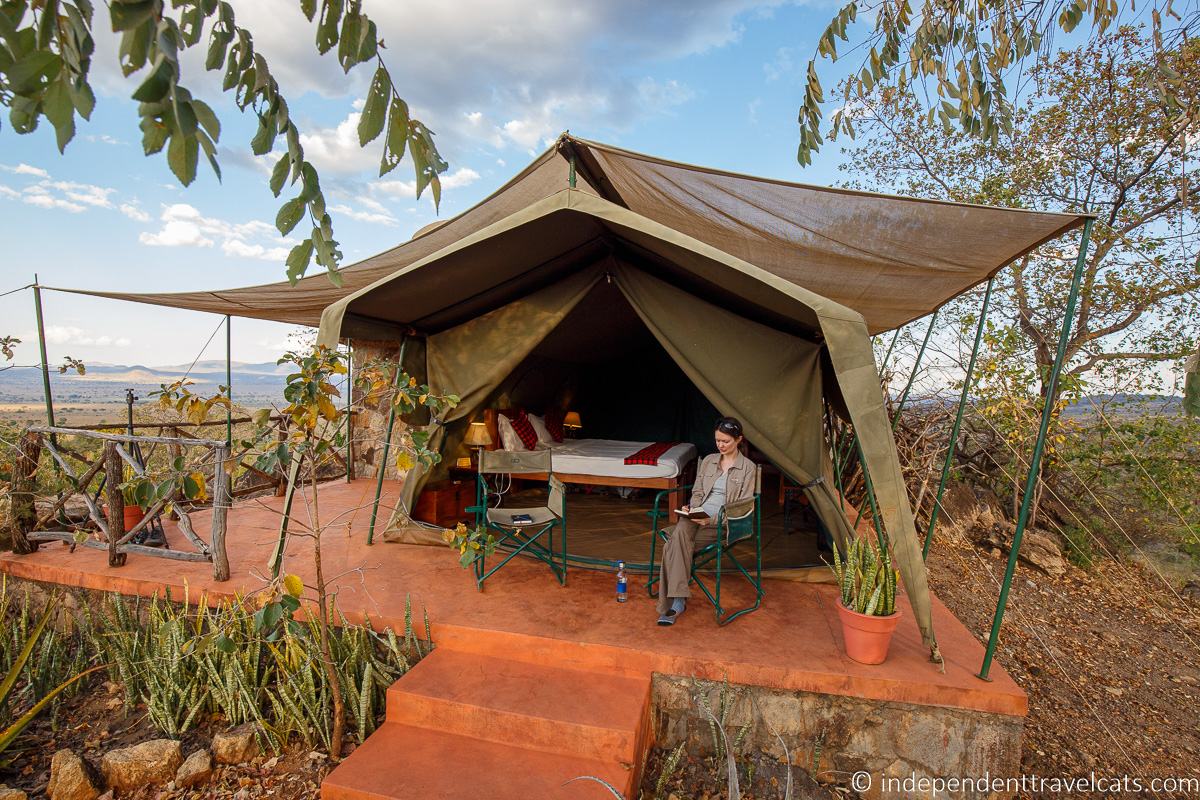
Safari Packing Checklist
Here’s a full safari packing checklist to help you remember what to bring on your trip for reference.
- Clothing
- T-shirts / tops
- Button down shirts
- Sweater / fleeces for layering
- Trousers / Pants / Shorts
- Dresses
- Underwear
- Socks
- Comfortable walking shoes
- Hiking boots (if needed)
- Sandals (if needed)
- Sleepwear
- Swimwear
- Nicer outfit for evening wear if required
- Sunglasses
- Wide-brimmed hat
- Raincoat or poncho
- Coat (if needed)
- Hat / gloves (if needed)
- Reusable water bottle / water filter
- Toiletries
- Toothpaste / toothbrush
- Deodorant
- Skincare items (cleansers/soap/creams etc.)
- Moisturizer / lotion
- Chapstick with SPF
- Sun cream / Sunscreen (SPF 30+)
- Insect repellent
- Basic Medications and first aid items (incl. anti-malarials and prescriptions)
- Hygiene Products
- Cosmetics
- Hair care items (shampoo/comb/hair ties, etc.)
- Razor / tweezers / nail clippers
- Hand sanitizer
- Rehydration salts
- Eye mask / ear plugs
- Other __________________
- Photography Gear
- Camera and lenses
- Photography bean bag
- Memory cards
- Spare batteries / chargers
- Camera accessories
- Other __________________
- Electronics
- Smartphone
- Headphones / ear buds
- Portable power pack
- Travel adaptor
- Cables / chargers
- Other __________________
- Hiking / Climbing Gear (if needed)
- hiking day bag, duffel bag (if needed for porter), gaiters or leech socks / hiking poles / hiking clothing, reusable water bottle or hydration pack (like Camelbak), head lamp or flashlight, any camping gear like sleeping bag etc. (if not provided), Other
- Luggage
- Checked bag
- Carry-on bag
- Day pack
- Miscellaneous
- Passport
- Visa / proof of onward travel etc (if required)
- Vaccination records
- Jewelry / watch
- Binoculars
- Guidebooks
- Laundry supplies
- Travel journal
- Mini sewing kit
- Reading materials
- Cards / games / puzzle books
- Other ___________________
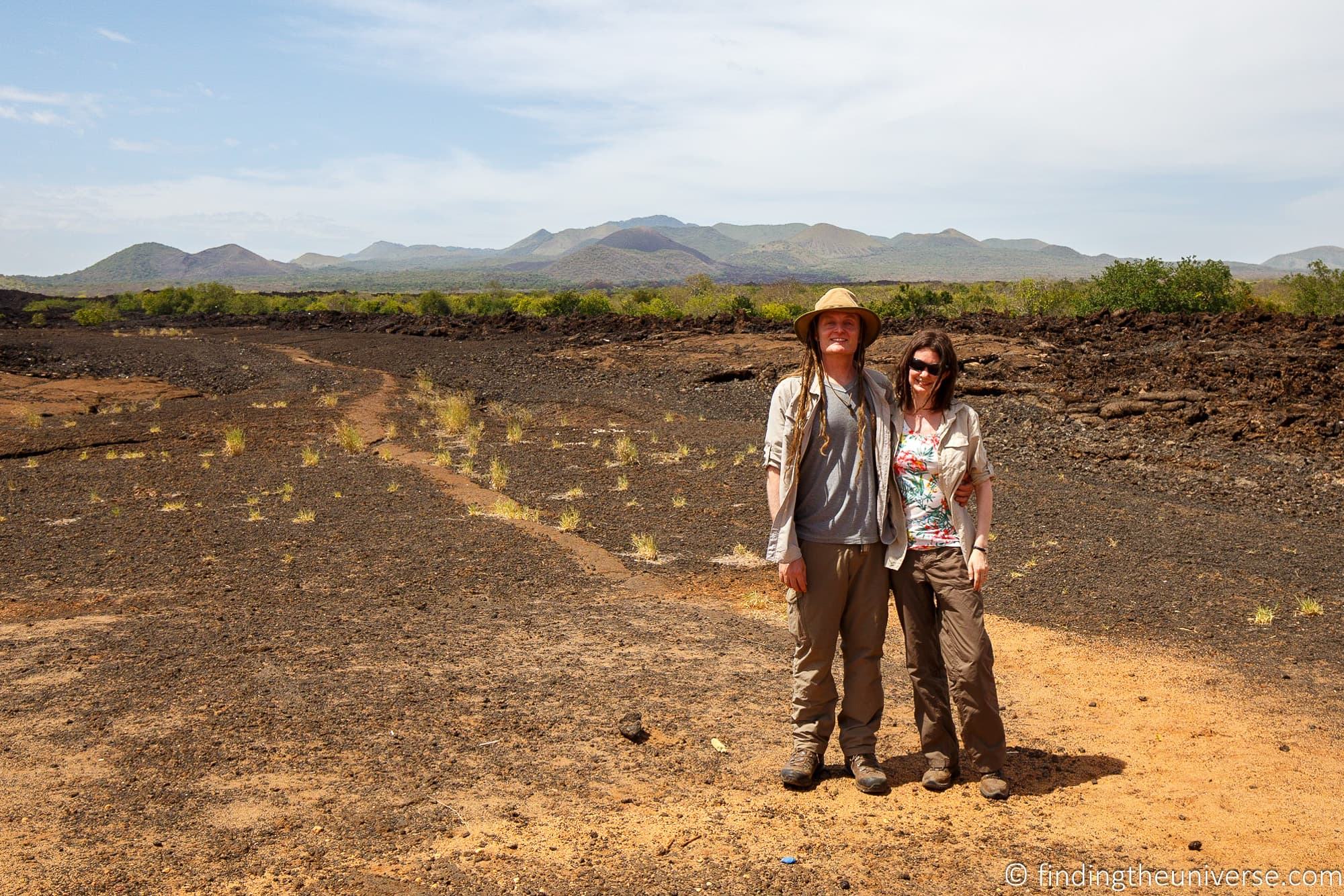
Further Reading
That’s it for our guide to what to pack on safari! We hope you found it useful. We do have some more content that we also think you might find handy when planning your safari.
And that’s it! As always, we are happy to try to answer any questions you may have about planning your own safari. Just pop them in the comments below, and we’ll get back to you as soon as we can.
Or if you have been on safari and want to share your own experiences or advice about packing for a safari, feel free to share it below!
